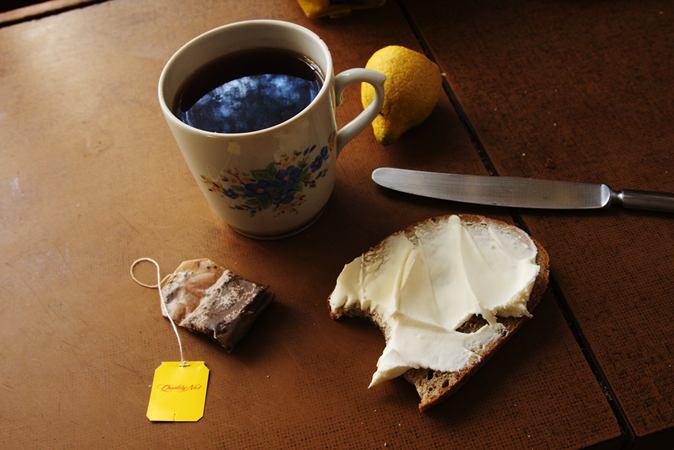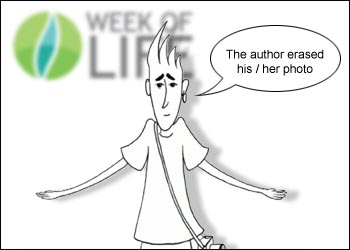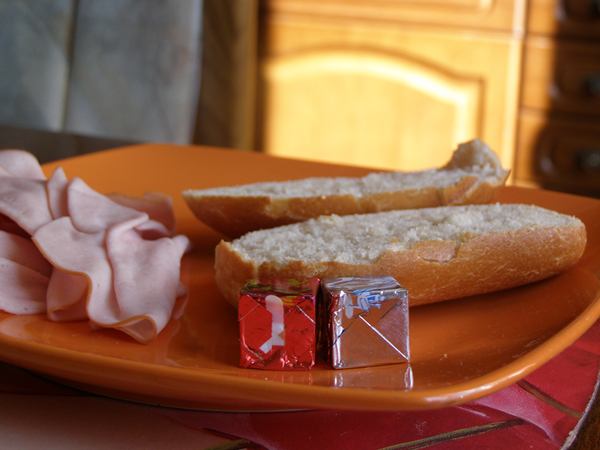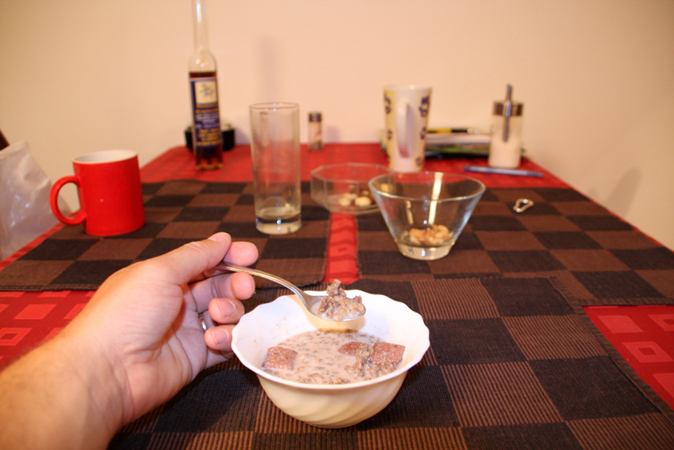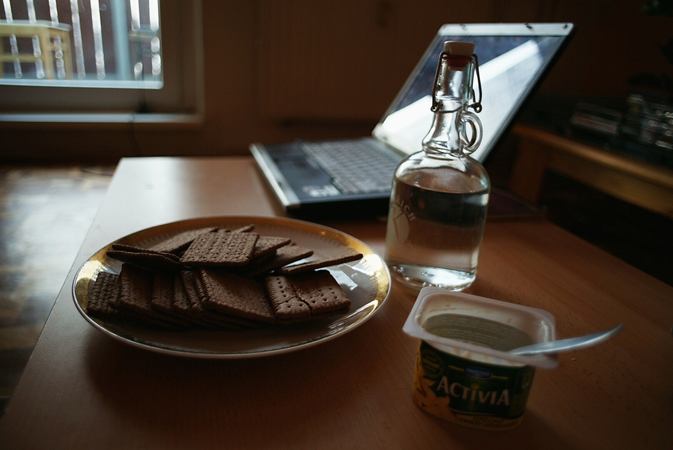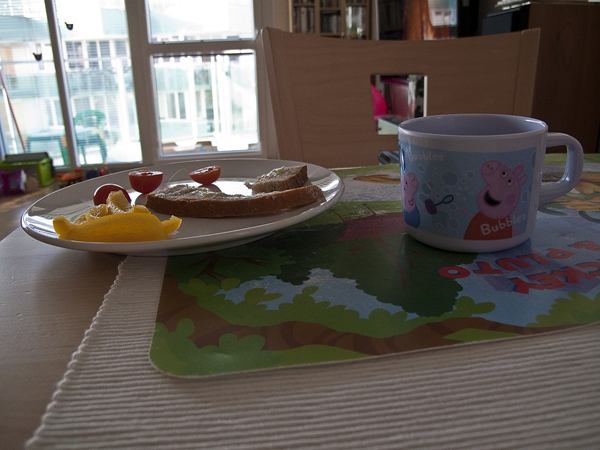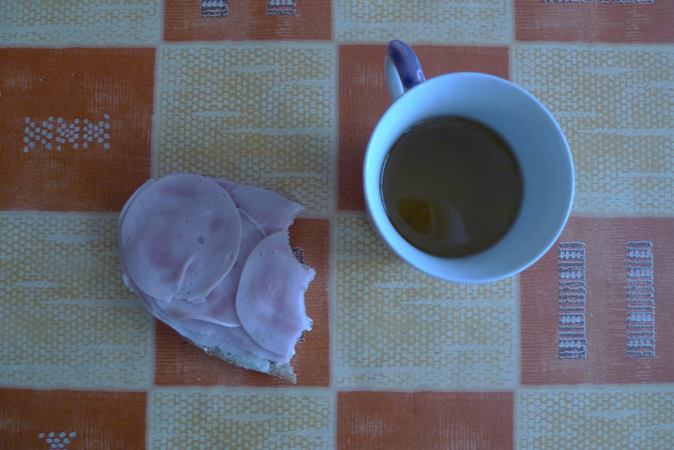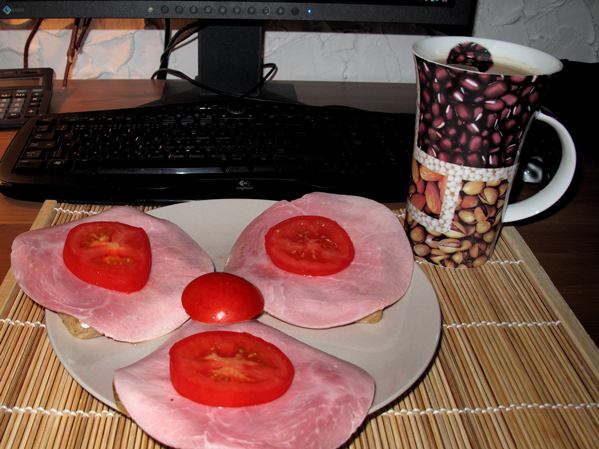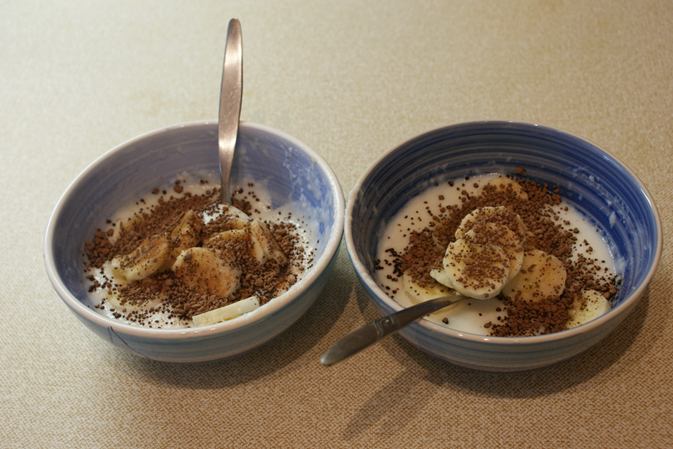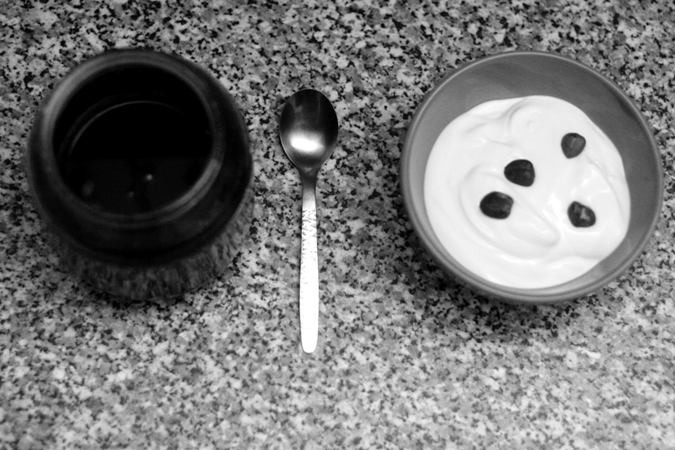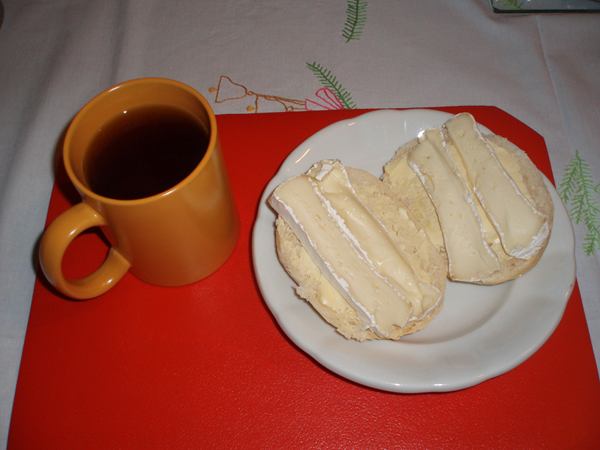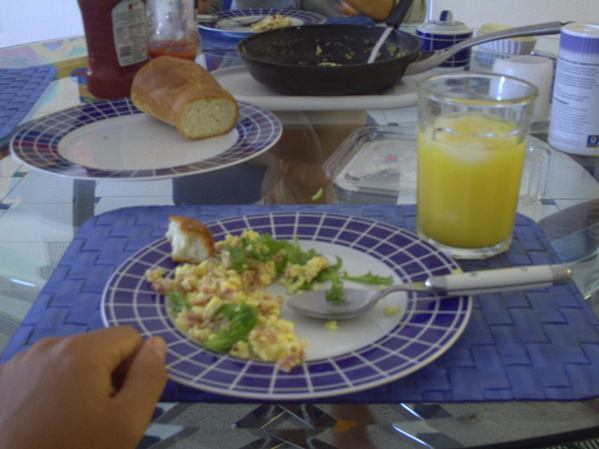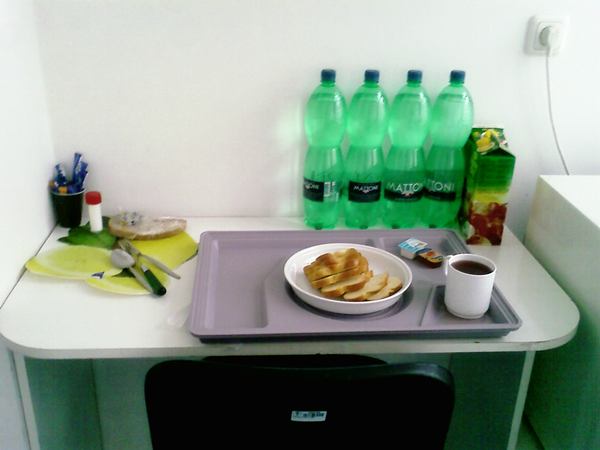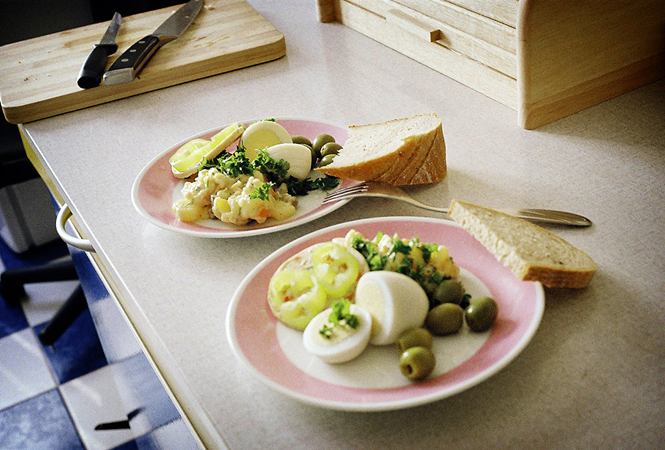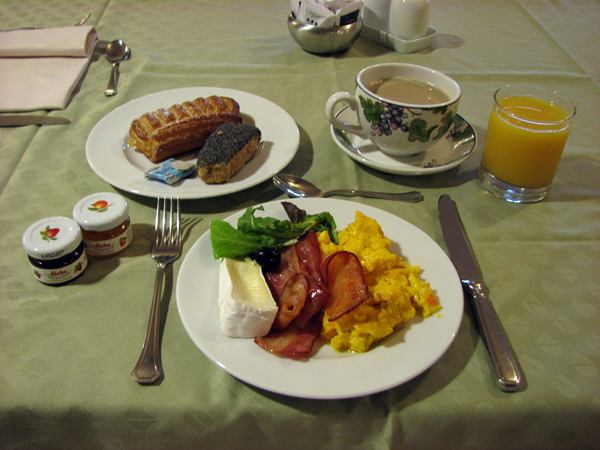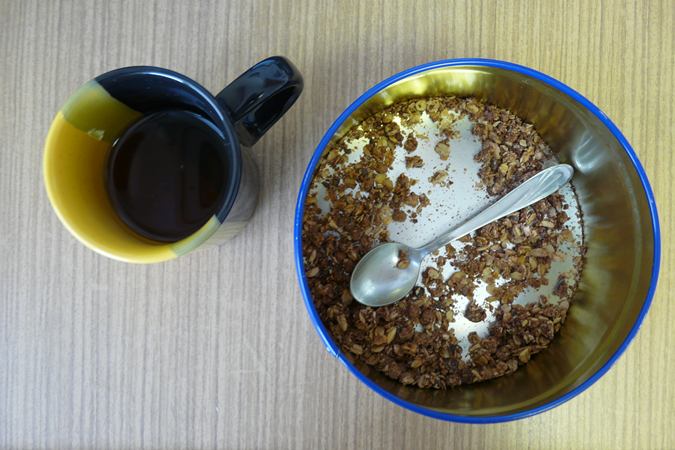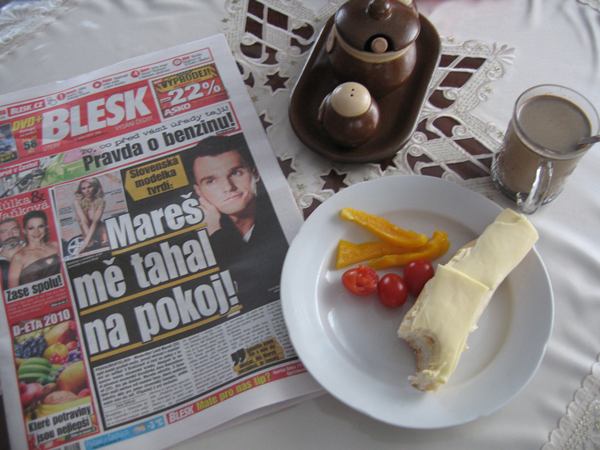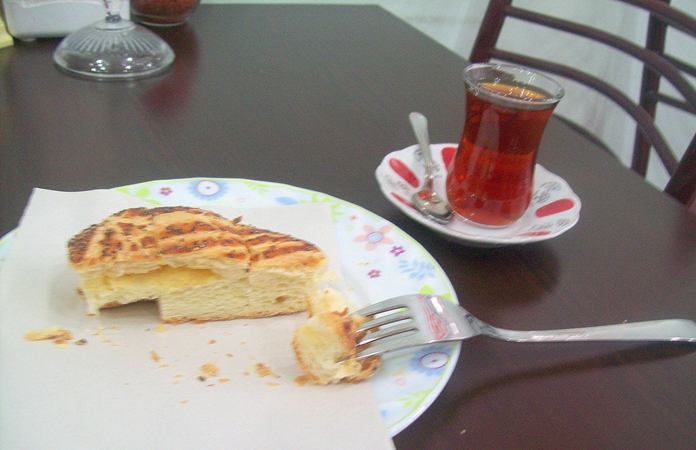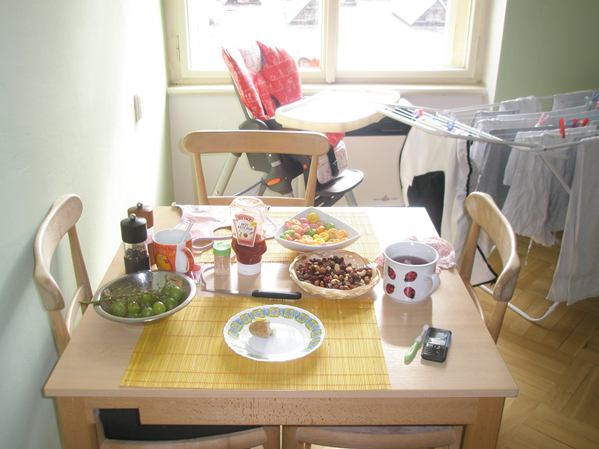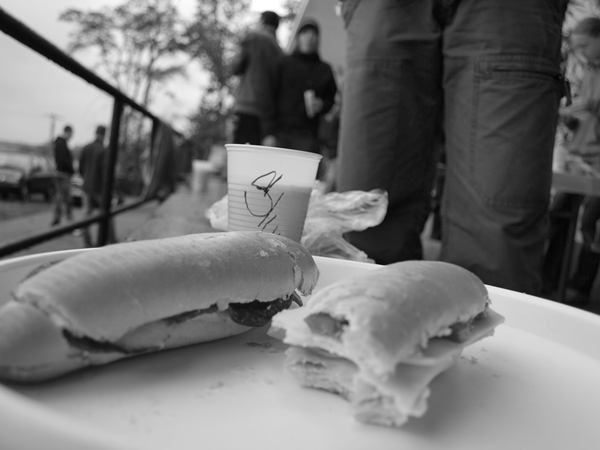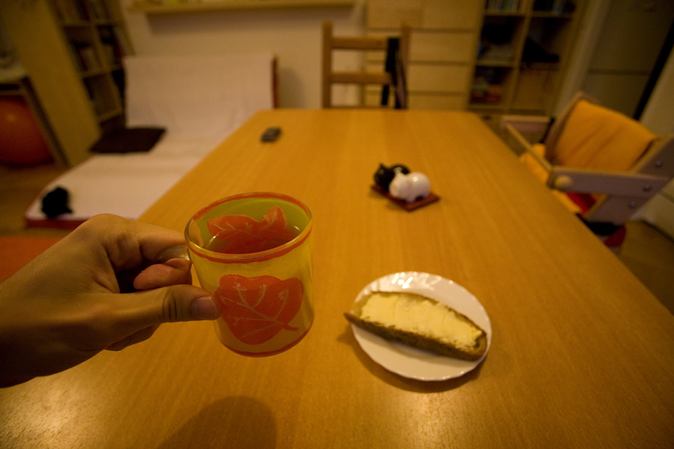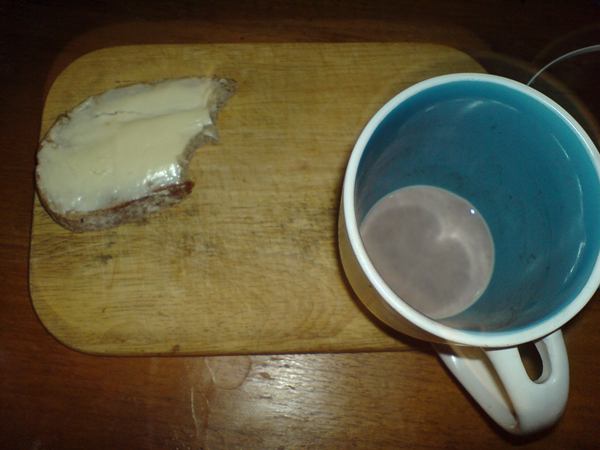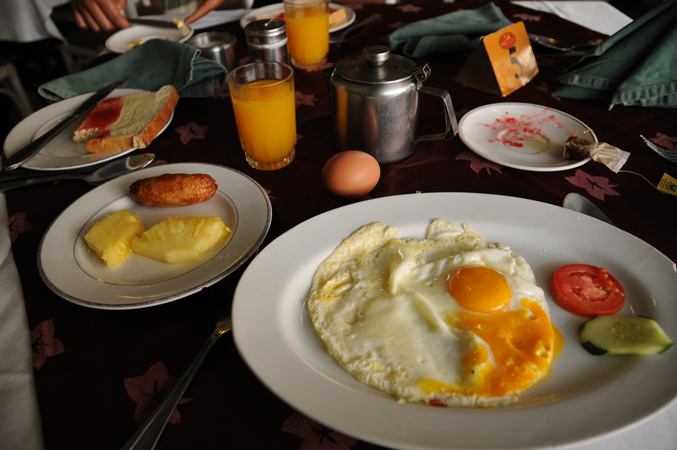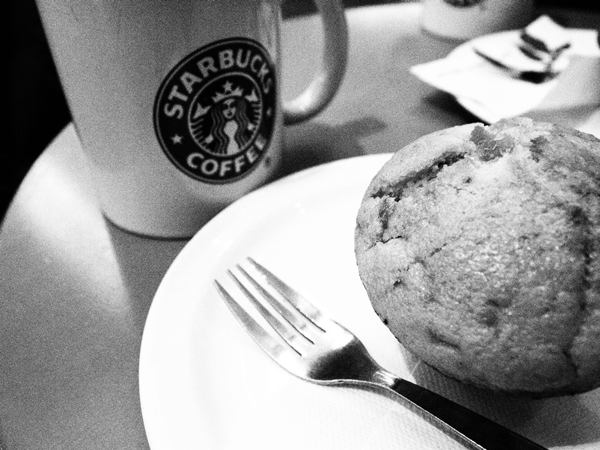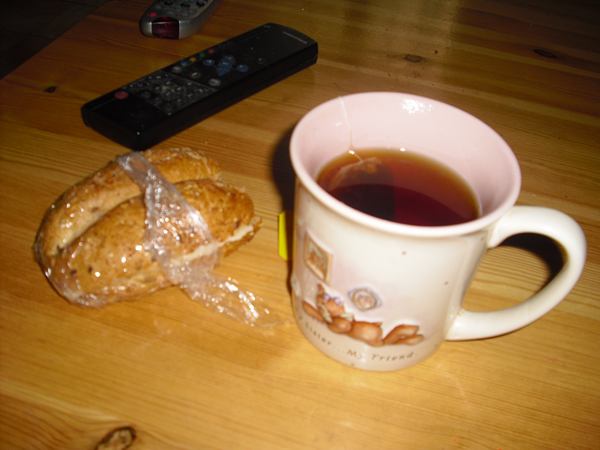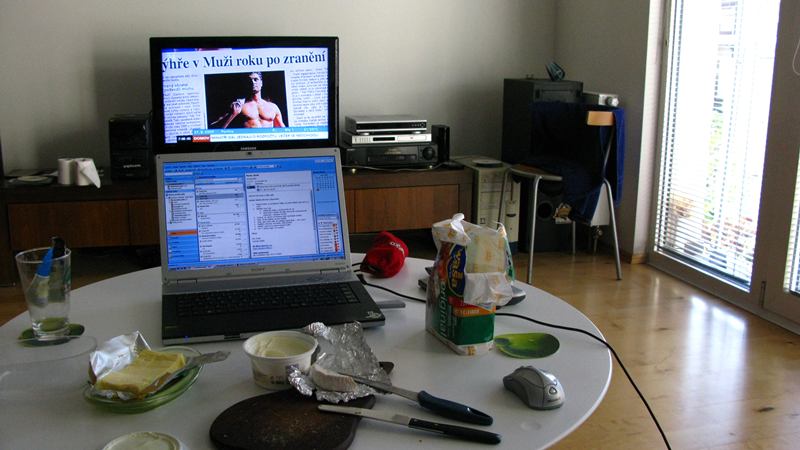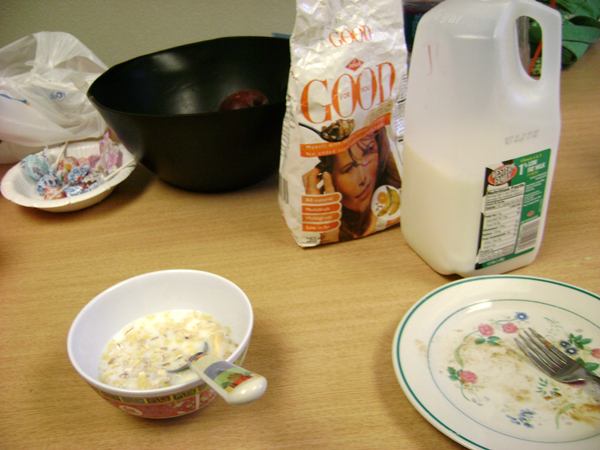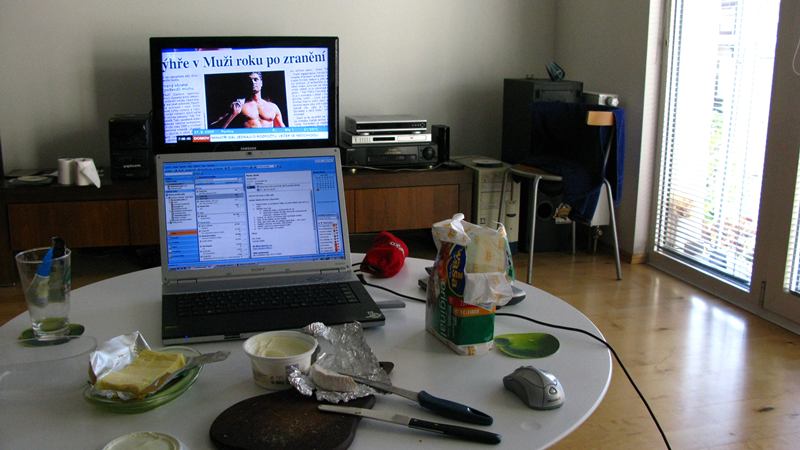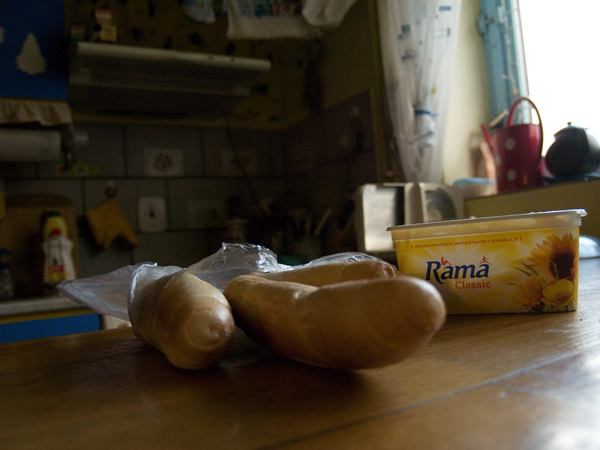There is a new member of our WoL team Petr Benda.
Week of Life součástí Národní knihovny ČR
 Vážení členové Week of Life, s radostí vám oznamujeme, že jsme se dne 14. dubna 2010 stali součástí projektu Národní knihovny České republiky (se sídlem v Klementinu) s názvem WebArchiv. Díky této spolupráci budou stránky Week of Life trvale uchovány pro budoucnost a stanou se tak součástí českého národního kulturního dědictví.
Vážení členové Week of Life, s radostí vám oznamujeme, že jsme se dne 14. dubna 2010 stali součástí projektu Národní knihovny České republiky (se sídlem v Klementinu) s názvem WebArchiv. Díky této spolupráci budou stránky Week of Life trvale uchovány pro budoucnost a stanou se tak součástí českého národního kulturního dědictví.
Tímto bychom vám také rádi vyjádřili své poděkování za to, že jste projekt podpořili a pracujete na něm společně s námi.
Hezký den vám přeje tým Week of Life
Panasonic Lumix DMC-TZ10
Viewfinder-less ultra zoom compact cameras are a very popular type nowadays. The range of the stabilized optics is usually high, but based on dimensions, they fall into the typical compact camera category. Moreover, the new Panasonic Lumix DMC-TZ10 is very well equipped with all sorts of functions, including the above standard built-in GPS module.
For some time now, digital compact cameras have been offered in several selectable color designs. Lumix TZ10 is available in five: classic black and silver, but also red, blue or brown along with a metal-coated body.
 |
 |
|
 |
 |
|
 |
||
| Photo Panasonic | ||
Regarding structure and design, it’s a rather typical compact camera. A 3-inch LCD display dominates the backside of the camera, excelling with a 460 thousand pixel screen, which ensures a picture rich in details. The front right part includes a small grip for a firm hold.
 |
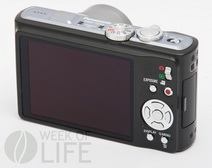 |
A telescopic lens barrel is unusually large for compact cameras. This is a result of the 12x optical zoom and respectable lens speed of the Leica DC VARIO-ELMAR optics, with a focal length of 25-300 mm and lens speed F3.3-F4.9, correspondent with a 35 mm film. Therefore, we are looking at wide-angle optics gradually transforming into a telephoto lens. Naturally, the lens is effectively stabilized.
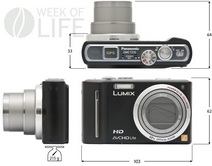 |
||||||||||
|
||||||||||
The Panasonic Lumix DMC-TZ10 is fully equipped with various functions – in fact, you’ll find most of the functions an advanced SLR would have. Along with the usual modes, the mode dial positioned at the top of the camera will offer you the CUST option – custom mode. You can use this mode to store your personal custom settings.
Furthermore, Panasonic directed its focus towards video recording, encoded in AVCHD Lite with stereo sound. The manufacturers placed an extra shutter button (button with a red dot) for video sequences on the rear side of the camera, so it isn’t necessary to turn the mode dial and switch to video-mode; pressing the video shutter button will suffice. The right side of the camera offers an HDMI connector for direct playback of recorded videos on HD TVs.
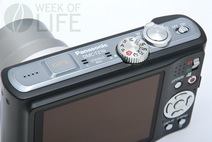 |
 |
A brand feature of Lumix TZ10 is the ability to record geographic coordinates into the EXIF data of photographed images. The antenna of the GPS module is hidden under a small square jut at the top side of the camera, above the lens. The module works in two modes (besides the off option): On mode and airplane mode. When turned ‘On’, the GPS module updates the location every minute and works even when the camera is turned off. In that case, the updates come in every fifteen minutes. In ‘airplane’ mode, GPS functions only when the camera is turned on.
|
Besides the fact that the logged longitude and latitude are included in the EXIF data of your images, the camera allows for the notation of the place you are located at directly on the display, thanks to its internal database. If you happen to make use of this function, you also have the option to view the coordinates. Unfortunately, Lumix TZ10 doesn’t keep track of your path in form of a separate file, which could be used for instance as a depiction of your journey later on, in combination with specific internet applications. Therefore, the built-in GPS module only allows for the portrayal of the image location. There are several compatible PC programs such as Google Picasa or Zoner Photo Studio.
There are also problems that come with the inclusion of GPS. Firstly, you need to hold your camera in the way that the antenna is at the top, directed at the open sky (GPS will not work inside). One might ask why there is no neck strap included in the package and only a wrist strap. For the best and most accurate GPS location, you simply need to hold the Lumix in a horizontal position without concealing the antenna. The other problem is sensitivity. Even with a perfect ‘view’ of the clear sky and in sight of five to seven satellites, the GPS module has a tolerance of five to fifteen meters in its accuracy. Basic external GPS devices are usually more precise.
Screenshots of the menu of Panasonic Lumix DMC-TZ10
 |
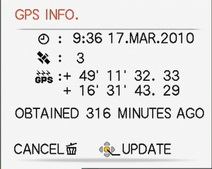 |
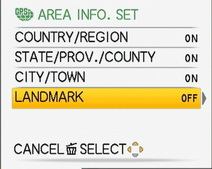 |
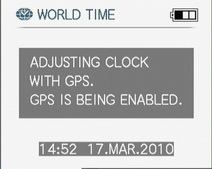 |
 |
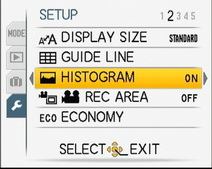 |
Overall evaluation
Panasonic Lumix DMC-TZ10 is a very pleasing compact camera destined for travelling due to its characteristics and features. It’s equipped with a wide-angle quality zoom that should suffice in most situations, with the 12 megapixel sensor along with the optics ensuring for a good collection of quality images. The key feature that pushes the camera above standard is surely its GPS module. Despite several flaws, the automatic image location sure comes in handy from time to time.
Common Price (at the time of this review being published): $439
Basic Technical Data for Panasonic Lumix DMC-TZ10
Sensor
CCD 12 Mpx, 1/2,33“
12 Mpx (4 000 × 3 000 px)
Light sensitivity ISO 80 to 1 600
Optics
25–300 mm F3,3–4,9
Lens stabilization
Memory medium
SD/SDHC/SDXC, 15 MB internal memory
Data formats
Image: JPEG
Video: AVCHD Lite, MOV
Video
1 280 × 720 px, 25 nebo 30 fps
640 × 480 px, 25 nebo 30 fps
848 × 480 px, 30 fps
320 × 240 px, 30 fps
Stereo sound
LCD
Screen size 3″ (76 mm)
460 000 px
Power supply
Li-Ion battery
Dimensions and weight
103 × 62 × 33 mm (w × h × d)
215 g (incl. battery and memory card)
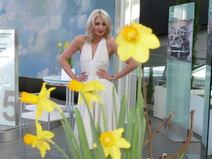 |
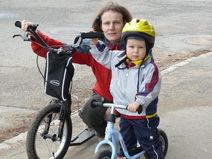 |
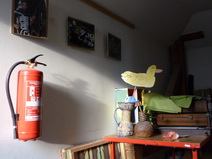 |
 |
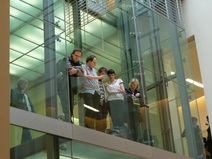 |
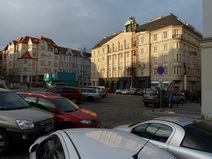 |
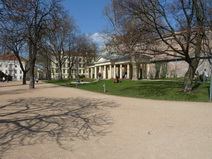 |
 |
 |
 |
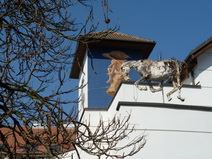 |
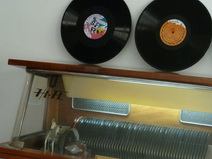 |
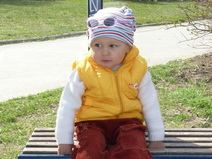 |
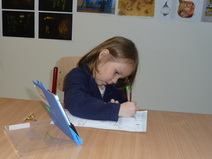 |
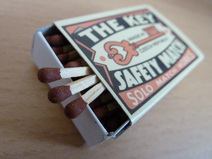 |
Breakfast
Breakfast is the most important meal of the day and at times, a tasteless coffee or a burned toast can ruin our mood for the whole day. On the other hand, if we do enjoy a proper breakfast, we charge our body and brain with so much energy that we are able to resist what the world has in store for us on that given day. It may sound as a corny catchphrase from commercials, but just recall the last time a crispy croissant or breakfast made with love lifted your spirit. That’s why we’ve decided to take a peek into your kitchens and out of pure curiosity, explore your breakfast habits. Looking at the first few images, it was obvious that most of you prefer your breakfasts salty rather than sweet. If you’re enjoying your breakfast at this very moment, bon appétit and for those that have already finished their breakfasts for the day, let us take you on a short culinary adventure.
Irena Bucharová, Project co-ordinator, Czech Republic
František M. Kopáček, Writer, Czech Republic
Helena Horáčková, Design engineer, Czech Republic
Emílie Mrazíková, Retired,Czech Republic
Arina Kuranova,Student, Czech Republic
Jana Holcová, Office worker, Czech Republic
Igor Faltus, Graphic designer, Czech Republic
Jan Watzek, Student, Czech Republic
Karel Vaněk, Technician, Czech Republic
Přemek Divácký, Technician, Czech Republic
Petr Kleiner, Manager, Czech Republic
Roman Doleček, Unemployed, Czech Republic
Zdeněk Dvořák, Special education needs teacher, Czech Republic
Jan Martinek, Student, Czech Republic
František Ortmann, Photographer, Czech Republic
Marcel Fujcik, Photographer, Czech Republic
Michaela Trčková, Student, Czech Republic
Lubomír Budný, Student, Czech Republic
Blažena Ejdn, Warehouser, Czech Republic
Antonín Blažek,Student, Czech Republic
Petr Hrubý, Engineer, Czech Republic
Gabrielle Guedj, Manager, Croatia
Lenka Pužmanová, Graphic designer, Czech Republic
Mila Štáfek, Worker, Czech Republic
Stanislava Kopáčková, Model, Czech Republic
Roman Čampula, Student, Czech Republic
Martin Škulina, Worker, Czech Republic
Dáša Veselá, Parental leave, Czech Republic
Karolina Koštialová, Student, Czech Republic
Zeynep Gülabi, Engineer, Turkey
Lucie Červinková,Student, Czech Republic
Kateřina Zajíčková, Parental leave, Czech Republic
Erik Suder, Train dispatcher, Czech Republic
Honzik Martinek, Student, Czech Republic
Zdenka Kyselová, Parental leave, Czech Republic
Nik H…, Student, Czech Republic
Mojmír Gayer, Retired, Czech Republic
Jiří Šebek, Web designer, Czech Republic
Marie Fučíková, Bartender, Czech Republic
Jiří Pergl, Enterpreneur, Czech Republic
Jan Lankaš, Journalist, Czech Republic
Milan Rejholec, Student, Czech Republic
Milan Martinek, Teacher, Czech Republic
Diana Reinhardtová, Student, Czech Republic
Jana Bučková, Student, Czech Republic
Pasi Heiskanen, Web designer, Finland
Nový generální partner projektu Week of Life
 Vážení členové Week of Life,
Vážení členové Week of Life,
rádi bychom vám oznámili, že se společnost Pilsner Urquell stala oficiálně naším generálním partnerem pro Českou republiku. Partnerství, jehož součástí je i změna designu hlavní stránky projektu Week of Life, si velice vážíme a těšíme se na budoucí spolupráci.
Váš tým Week of Life
Snídaně
Snídaně je základ každého dne a leckdy nám nepovedená ranní káva či připálený toust dokážou pěkně pokazit náladu. Pokud se však dobře nasnídáme, nabijeme své tělo i mozek energií na celý den a jsme schopni lépe odolávat vlivům zvenčí. Zní to sice jako otřepaná fráze z nějaké reklamy, ale vzpomeňte si, jak vám takový křupavý croissant či snídaně připravená s láskou dokážou zvednout náladu. Proto jsme se rozhodli, že nakoukneme i vám ráno do kuchyně a omrkneme to vaše ranní posnídání. Byli jsme také zvědaví, jaká variance se u vás vyskytuje nejčastěji a již na první pohled je zřejmé, že vítězí ta slaná. Pokud zrovna snídáte, tak vám přejeme dobrou chuť, a těm, co mají již odsnídáno, alespoň kulinářský zážitek!
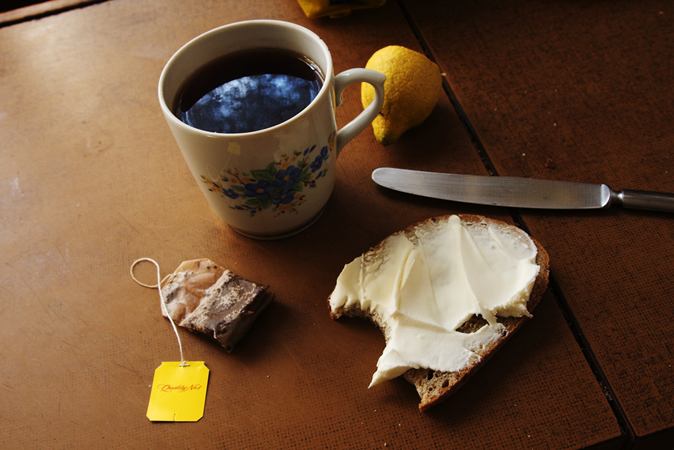
Irena Bucharová, Koordinátor projektu, Česká republika

Helena Horáčková, Konstruktér, Česká republika

Emílie Mrazíková, Důchodce, Česká republika
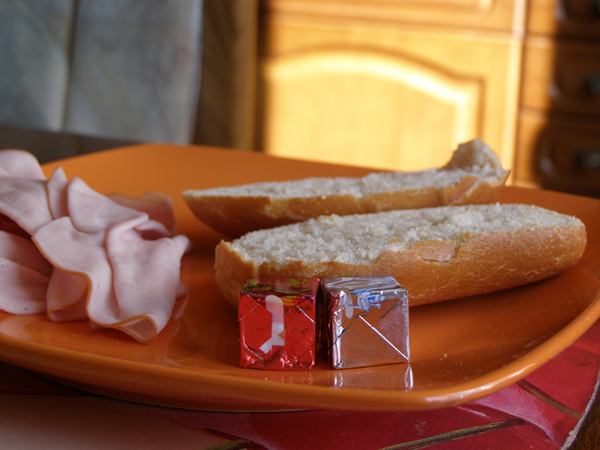
Arina Kuranova, Student, Česká republika
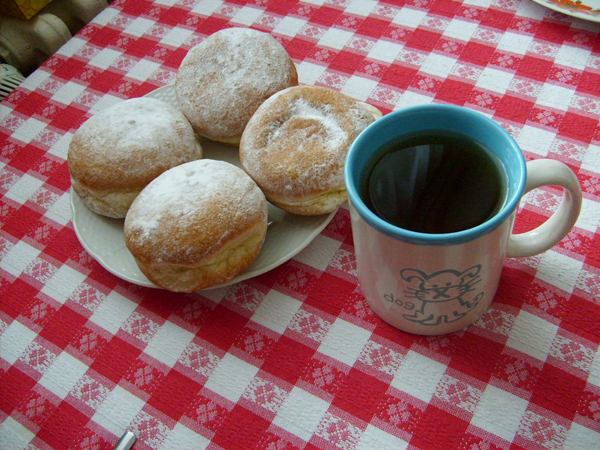
Jana Holcová, Administrativní pracovník, Česká republika

Igor Faltus, Grafik, Česká republika
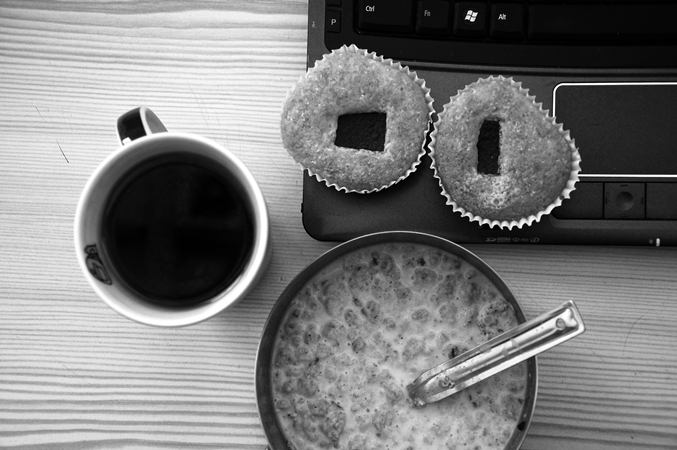
Jan Watzek, Student, Česká republika
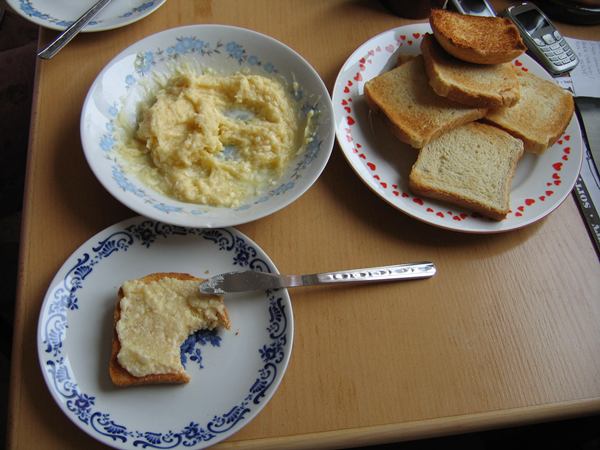
Karel Vaněk, Technik, Česká republika
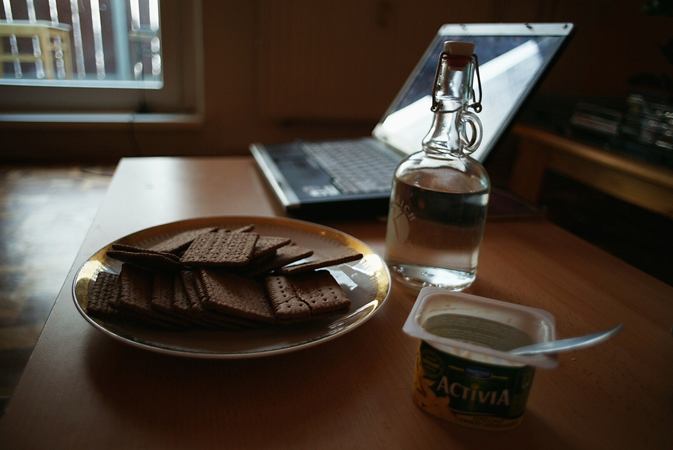
Přemek Divácký, Technik, Česká republika

Petr Kleiner, Manažer, Česká republika
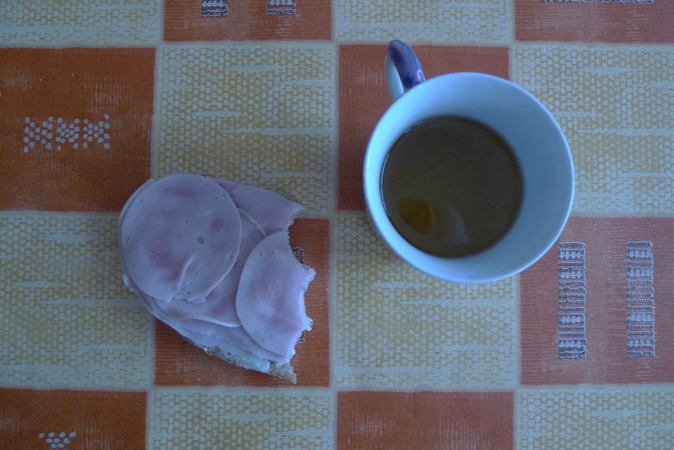
Roman Doleček, Nezaměstnaný, Česká republika

Zdeněk Dvořák, Speciální pedagog, Česká republika

Jan Martinek, Student, Česká republika
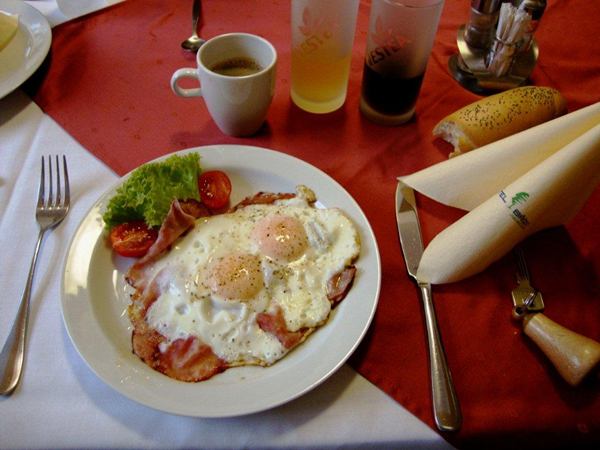
František Ortmann, Fotograf, Česká republika
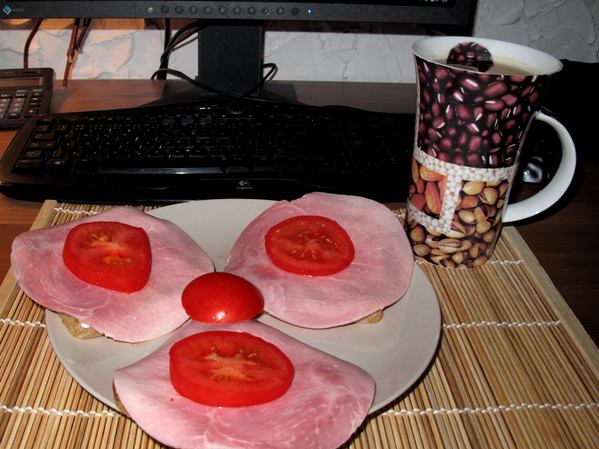
Marcel Fujcik, Fotograf, Česká republika
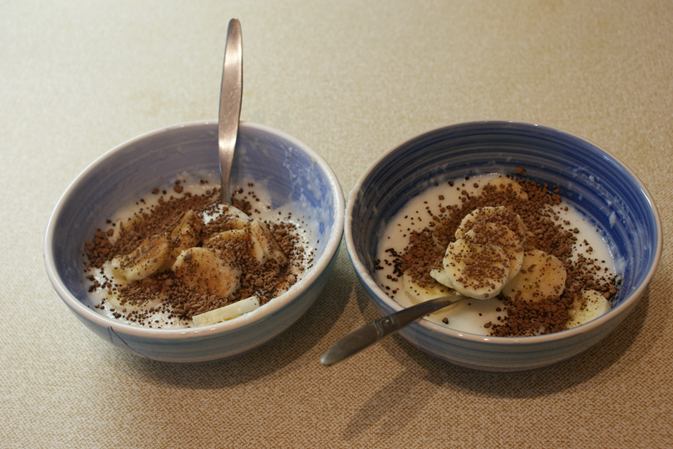
Michaela Trčková, Student, Česká republika
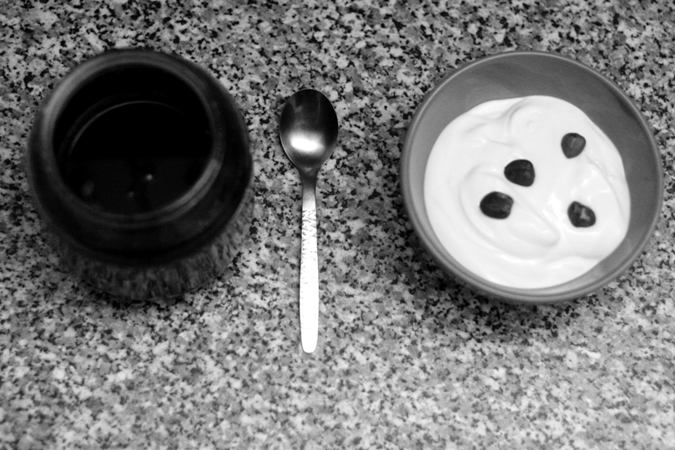
Lubomír Budný, Student, Česká republika
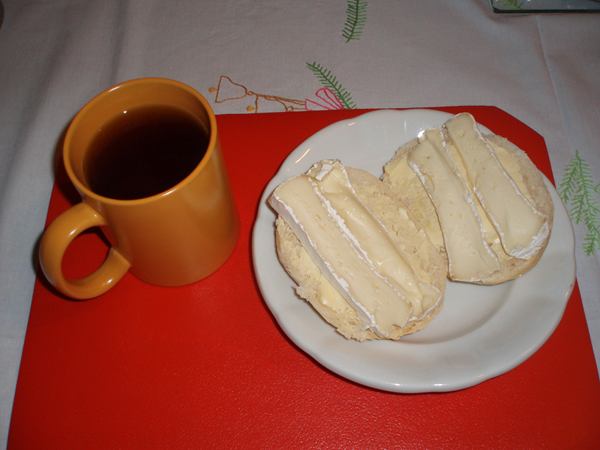
Blažena Ejdn, Skladník, Česká republika

Antonín Blažek ,Student, Česká republika
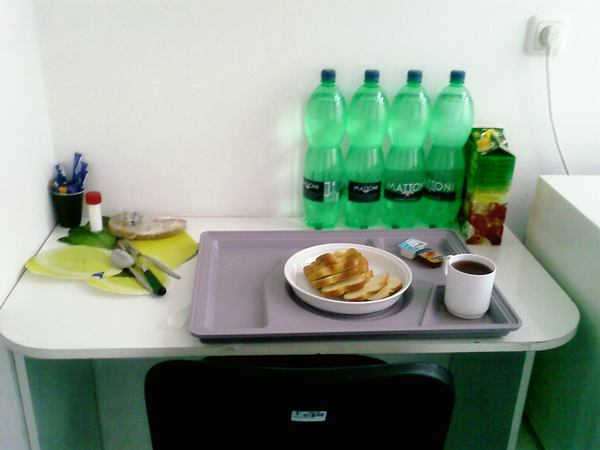
Petr Hrubý, Inženýr, Česká republika

Gabrielle Guedj, Manažer, Chorvatsko
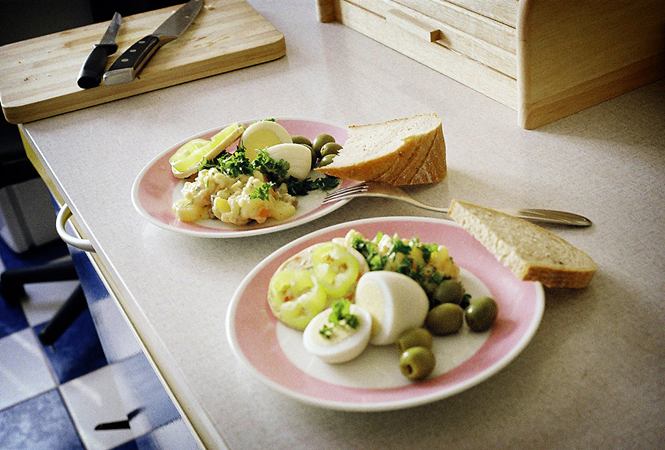
Lenka Pužmanová, Grafik, Česká republika

Mila Štáfek, Dělník, Česká republika
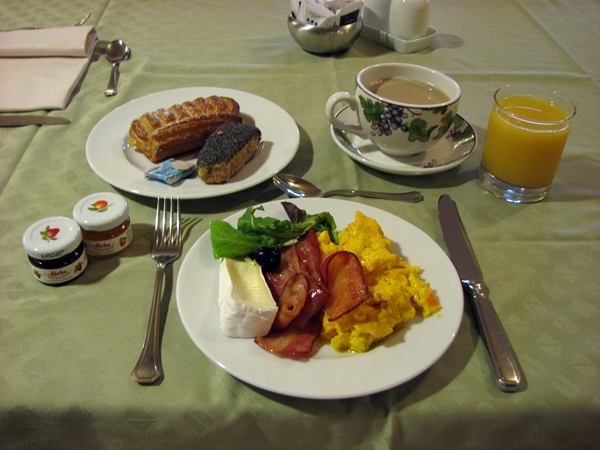
Stanislava Kopáčková, Model/ka, Česká republika

Roman Čampula, Student, Česká republika

Martin Škulina, Dělník, Česká republika
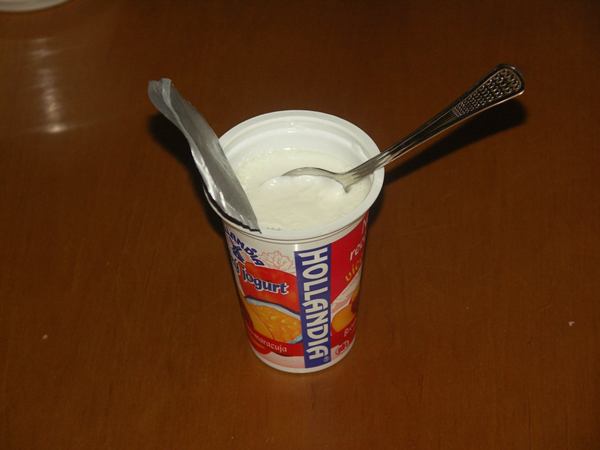
Dáša Veselá, Mateřská dovolená, Česká republika
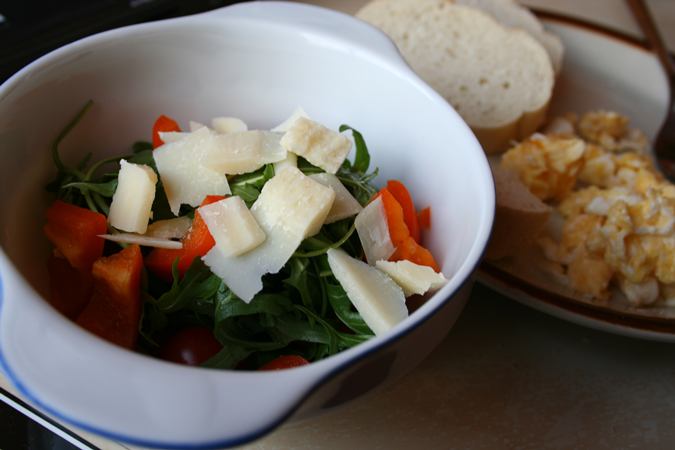
Karolina Koštialová, Student, Česká republika
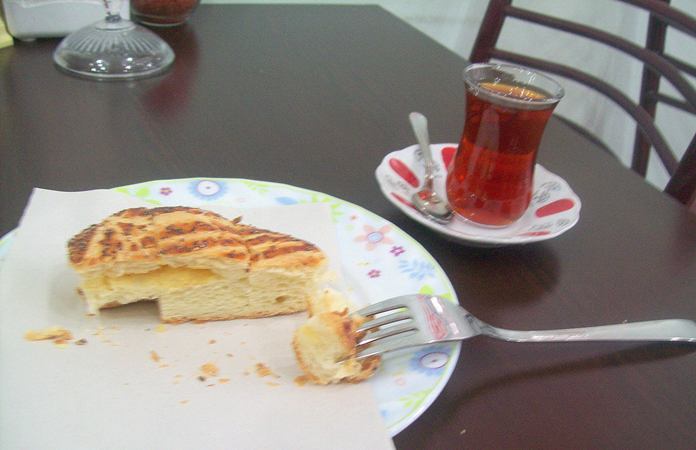
Zeynep Gülabi, Inženýr, Turecko

Lucie Červinková, Student, Česká republika
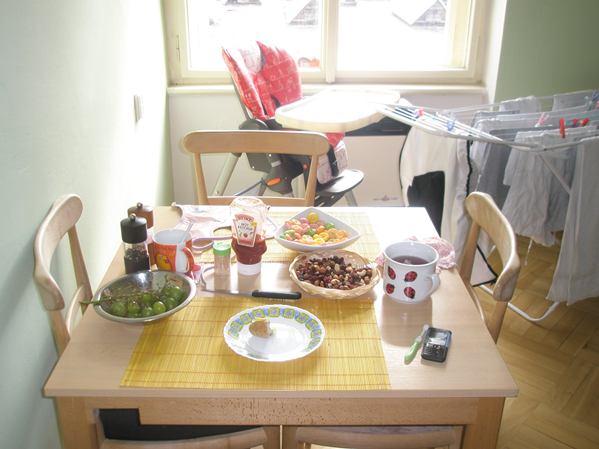
Kateřina Zajíčková, Mateřská dovolená, Česká republika
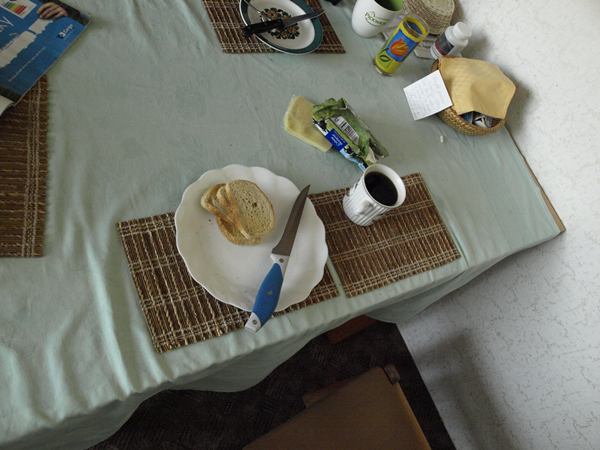
Erik Suder, Vlakový výpravčí, Česká republika
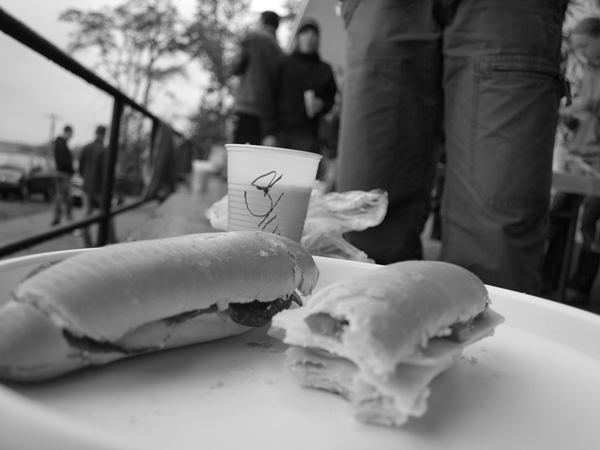
Honzik Martinek, Student, Česká republika
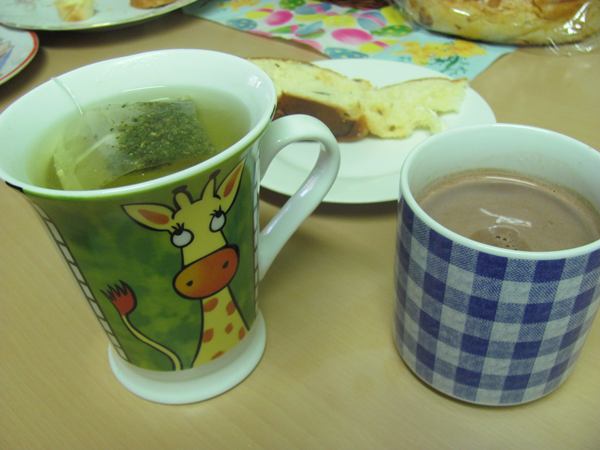
Zdenka Kyselová, Mateřská dovolená, Česká republika

Nik H…, Student, Česká republika
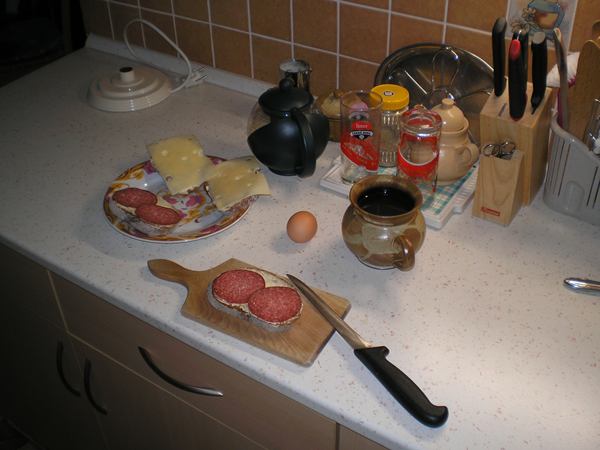
Mojmír Gayer, Důchodce, Česká republika
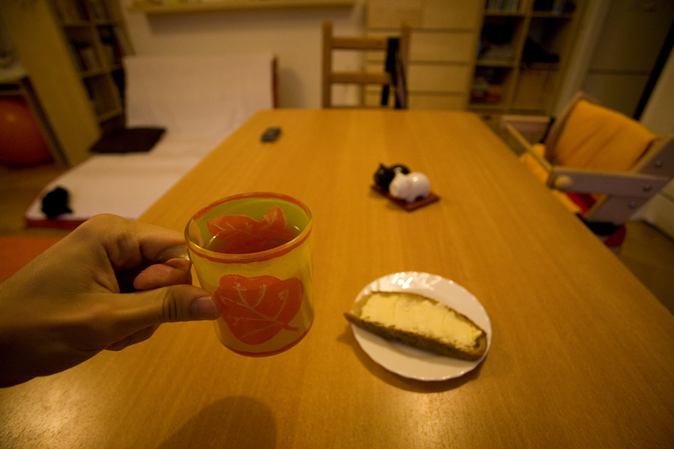
Jiří Šebek, Web designer, Česká republika
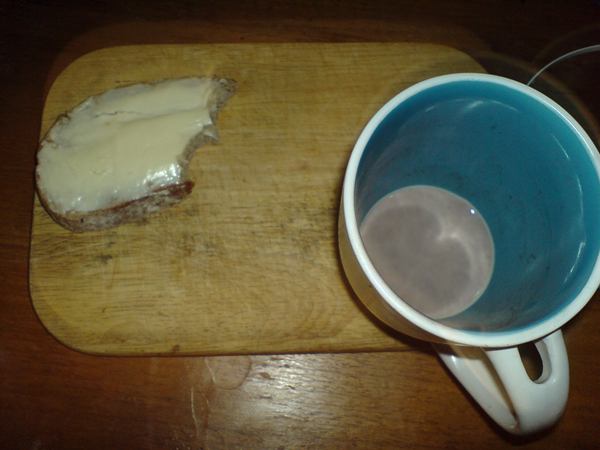
Marie Fučíková, Barman, Česká republika
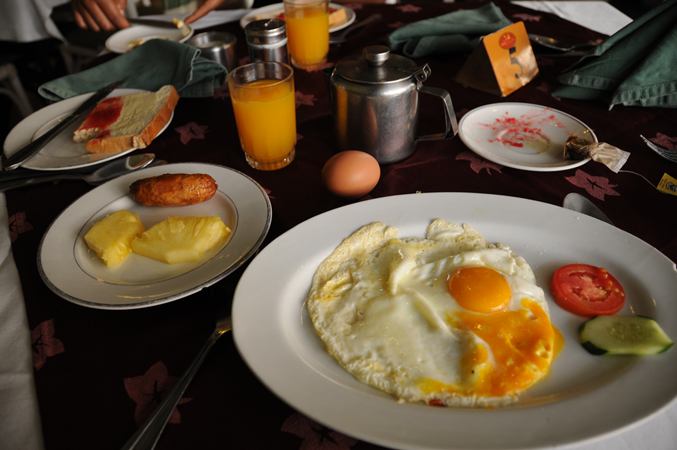
Jiří Pergl, Podnikatel, Česká republika
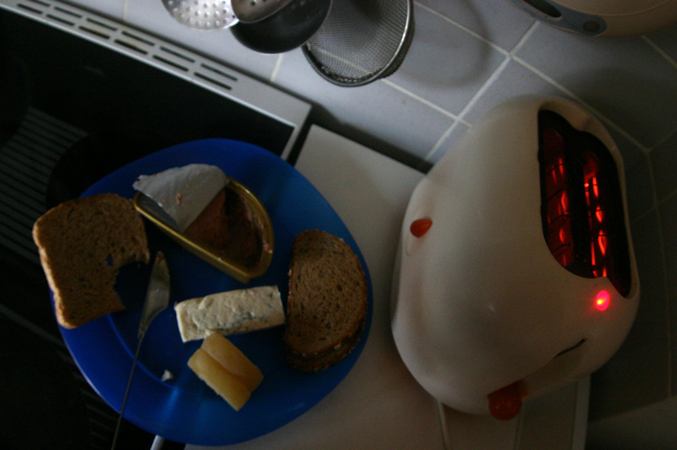
Jan Lankaš, Novinář, Česká republika
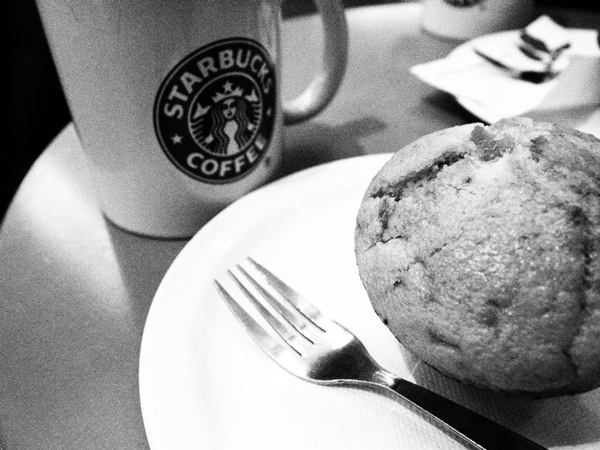
Milan Rejholec, Student, Česká republika

Milan Martinek, Učitel, Česká republika
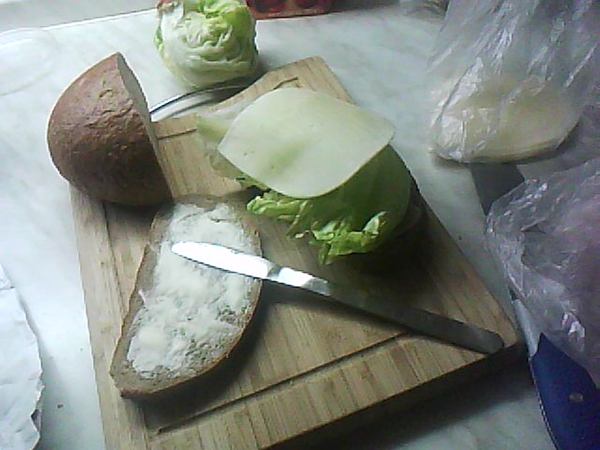
Diana Reinhardtová, Student, Česká republika
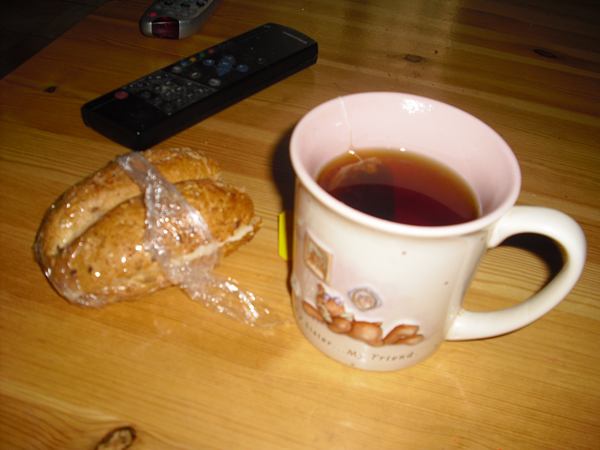
Jana Bučková, Student, Česká republika
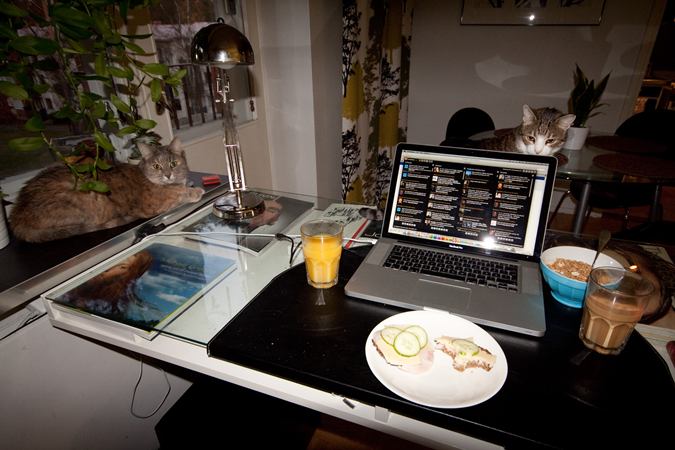
Pasi Heiskanen, Web designer, Finsko
Standing in front of the gate to heaven
Juraj Sucharda, Businessperson, Slovakia
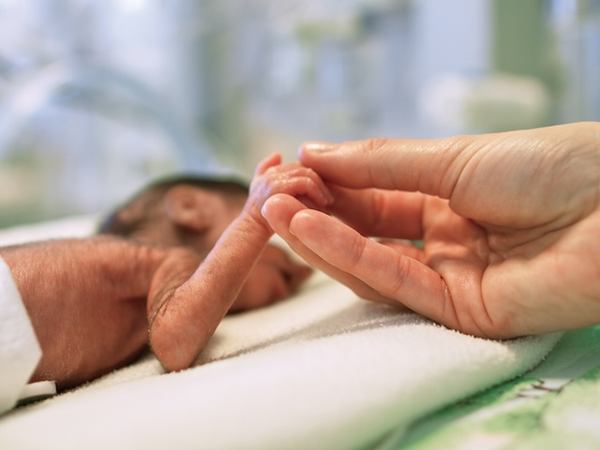 Before anything else, I need to make a confession. I think I may be a bit too emotional; I love children, I admire the unspoiled and pure world of children along with their little joys, sorrows and ’issues’. I’m glad I can be a part of it from time to time, and take a rest from the often cruel, disturbed and chaotic world of adults. When Jura Sucharda contacted me about the possibility of publishing a report called ‚Standing in Front of the Gate to Heaven’, I had mixed feelings. I wasn’t really sure if this issue is appropriate, or whether it belongs in the Week of Life sphere. Nevertheless, I accepted in advance. Then I saw the first photo from the snapshots Jura sent me, where a human hand is holding the tiny hand of a baby, who, instead of enjoying the delights of life, has to experience the first struggle for life. It hasn’t even begun and it can already be at its very own tragic end. This photo deeply touched my heart, and I immediately realized that this report should have its own place on the Week of Life website. The included text I read much later was of no less importance, however the initial glance at the photo simply showed the power of photography and its emotional impact on the inner soul of an individual. All of this combined played an important role in the decision making process. Adolf Zika
Before anything else, I need to make a confession. I think I may be a bit too emotional; I love children, I admire the unspoiled and pure world of children along with their little joys, sorrows and ’issues’. I’m glad I can be a part of it from time to time, and take a rest from the often cruel, disturbed and chaotic world of adults. When Jura Sucharda contacted me about the possibility of publishing a report called ‚Standing in Front of the Gate to Heaven’, I had mixed feelings. I wasn’t really sure if this issue is appropriate, or whether it belongs in the Week of Life sphere. Nevertheless, I accepted in advance. Then I saw the first photo from the snapshots Jura sent me, where a human hand is holding the tiny hand of a baby, who, instead of enjoying the delights of life, has to experience the first struggle for life. It hasn’t even begun and it can already be at its very own tragic end. This photo deeply touched my heart, and I immediately realized that this report should have its own place on the Week of Life website. The included text I read much later was of no less importance, however the initial glance at the photo simply showed the power of photography and its emotional impact on the inner soul of an individual. All of this combined played an important role in the decision making process. Adolf Zika
Neonatology, a subdiscipline of pediatrics, offers medical treatment to neonates, the diseased and the premature ones.
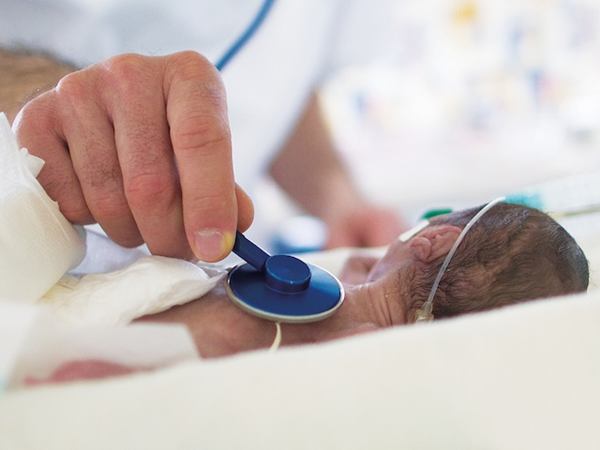 I stood facing the gate to heaven… Someone entered it, someone else left it to descend to the Earth. I am the father of two daughters. Of two beautiful and healthy girls. I’m familiar with the far caused by fever, and even though the nights I have stayed awake might be counted on the fingers of my hands, suddenly I perceive life in a different way. I hold out my hand to a doctor – God’s right hand. In his eyes I can see incredible energy and determination. I enter the Department of Neonatology with him. As he starts his work, the chief of the department, Doctor Krcho who has been working in this field since 1989, also begins his narration about people, their worries, opportunities, about the hardship and complexity of the whole system.
I stood facing the gate to heaven… Someone entered it, someone else left it to descend to the Earth. I am the father of two daughters. Of two beautiful and healthy girls. I’m familiar with the far caused by fever, and even though the nights I have stayed awake might be counted on the fingers of my hands, suddenly I perceive life in a different way. I hold out my hand to a doctor – God’s right hand. In his eyes I can see incredible energy and determination. I enter the Department of Neonatology with him. As he starts his work, the chief of the department, Doctor Krcho who has been working in this field since 1989, also begins his narration about people, their worries, opportunities, about the hardship and complexity of the whole system.
There are 10 doctors and 38 nurses at both departments that work in four shifts. Each of them is able to accommodate between 20 to 24 babies in danger of dying. The fight for their lives starts after their arrival and a complex check-up. The first steps, taken shortly after, will be decisive not only in the development of his or her condition, but will also influence possible long-lasting consequences. However, many parents do not realize what a critical state their child is in, such as for example with severe brain damage. Almost always, they expect the doctors to perform a miracle and the possible consequences, which will affect not only the child’s life but also theirs, would not even come to their mind. Just to think of such a situation makes my flesh crawl and I have no idea how I would react were I in their place…
The stay for premature and diseased neonates ranges between two weeks and four months, depending on various factors. A child with a weight over 2,000 grams (if its condition allows it) can be taken home… But the medical care doesn’t cease and its condition is under continuous control by specialized consultories, oculists, orthopedists, cardiologists, neurologues and nephrologists… However the most important steps are taken at the Department of Neonatology…
„I believe to witness a miracle, when I see a baby born in its 24th week – whose stay in this world is a great message.“
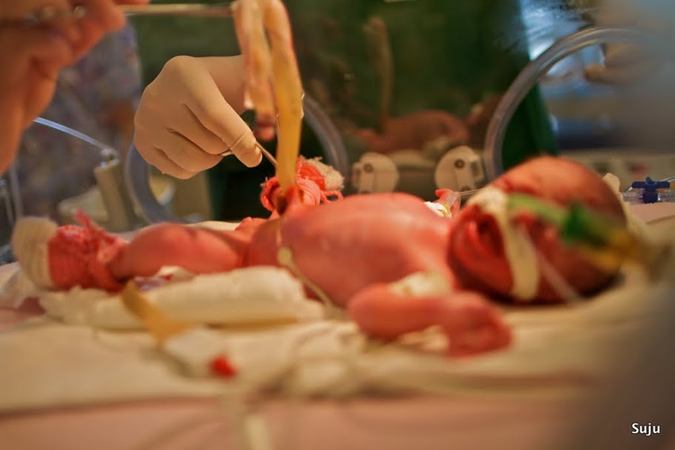 Premature birth can be caused not only by a too high or too low age of the mother, but also women who undergo artificial insemination are in danger, for this method allows multiple pregnancies. Furthermore, alcohol, cigarettes and an incorrect regime cause premature birth, and sometimes there can also be psychological factors, diabetes, viral infection or womb diseases that increase the danger. It might sound like a paradox, but the accomplishments of present-day medicine are also a cause of such problems, for they allow pregnancy in cases which, a few years ago, would be impossible to achieve.
Premature birth can be caused not only by a too high or too low age of the mother, but also women who undergo artificial insemination are in danger, for this method allows multiple pregnancies. Furthermore, alcohol, cigarettes and an incorrect regime cause premature birth, and sometimes there can also be psychological factors, diabetes, viral infection or womb diseases that increase the danger. It might sound like a paradox, but the accomplishments of present-day medicine are also a cause of such problems, for they allow pregnancy in cases which, a few years ago, would be impossible to achieve.
Doctor Krcho approaches a baby girl only a few hours old, whose mother is 16 years old. I feel so impressed while I look at that little creature, that even though she’s no bigger than my hands, she has such strength to fight for her life. I keep track of the personnel’s teamwork. They are so calm and balanced, so strong… Everything has its precise rules and procedures. I believe to witness a miracle, when I see a baby born in its 24th week – whose stay in this world is a great message. „The heart’s gettin’ better, the pressure’s stabilized, the color’s coming back…“ They cut off the umbilical cord and introduce two catheters that will supplement the tiny body with the medicaments and nutrition that it needs… The doctor stands up and says: „Ok, that’s it, we’re done.“ And I believe I saw something that resembled a smile. But this is only the beginning. Many complications may arise, such as various infections, bacterial sepsis or brain hemorrhage. Doctor Krcho continues with his description of the whole process. I can see nurses changing giant nappies, controlling all of the appliances. I can see the mothers holding their children with love, even despite all the tubes. Who knows what those little ones are thinking about… And what about their mothers?!? Mommies that are, after a tough fight, finally allowed to caress their sweethearts. I think of their fathers. I remember the birth of my daughters, the fear I felt seemed unbearable to me, but in comparison to what they have to be going through I think they deserve a Nobel Prize for courage. They have to support the woman – the mother, and cannot fail, they have to trust doctors and believe in their children… And not lose their mind.
Appliances, instruments, tubes, strict norms, procedures… and among it beautiful slippers for these little defenceless babies hand-made by the nurses. I get to know about the lack of money, apparatuses, about the need of people with ardour and an opened heart. I hear about tough moments and impossible decisions in which the babies are divided into those, that will have the chance to take the shot in this life, and those, that will increase the number of angels in the heaven.
„The hands – like God´s tools, they help, save, caress, work…“
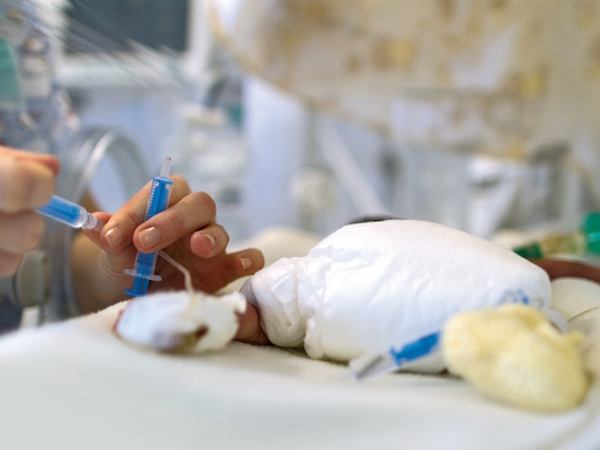 The hands – like God´s tools, they help, save, caress, work.. they are skilful, necessary and perfectly invented. The hands of doctors and nurses look so gentle even though so huge while caressing the little head. Their hands are golden. With the consent of doctor Krcho and the parents, we would like to explain you the importance of a digital camera, that in several cases was the only mean of connection between the mother and her child… After a very complicated birth the mother died. However, thanks to the small camera, that is usually used for documentation or quick (and many times only virtual) communication with other experts, the mother was able to see her little baby before she breathed her last.
The hands – like God´s tools, they help, save, caress, work.. they are skilful, necessary and perfectly invented. The hands of doctors and nurses look so gentle even though so huge while caressing the little head. Their hands are golden. With the consent of doctor Krcho and the parents, we would like to explain you the importance of a digital camera, that in several cases was the only mean of connection between the mother and her child… After a very complicated birth the mother died. However, thanks to the small camera, that is usually used for documentation or quick (and many times only virtual) communication with other experts, the mother was able to see her little baby before she breathed her last.
The deparment of neonatology is an important part of the hospital. However, not many parents know about it unless they had been there with their child. Therefore, I would like to introduce you to this world, to offer you the chance to get to know their hands, their work, possibilities, shortages… But the most important thing I want to show is the strenght of these children, their desire for life, their courage to fight and to win this battle.
When I ask doctor Krcho whether he feels like God when he saves a life in case where others would give in, he responds with a serious face: „ No, I don´t. I feel that way when we decide that the chance of life is gone and the appliance therefore can be switched off.“
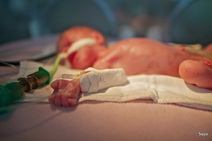 |
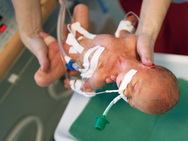 |
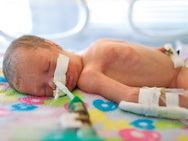 |
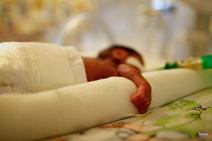 |
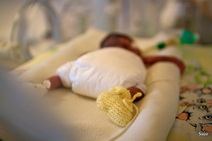 |
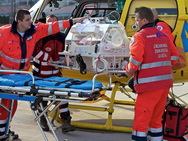 |
 |
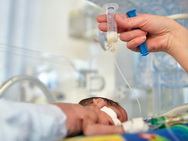 |
 |
 |
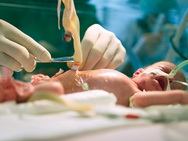 |
Stal som pred branou neba
Juraj Sucharda, Obchodník, Slovensko
 Rád bych se na začátku k něčemu přiznal. Jsem asi lehce přecitlivělý, miluju děti, mám rád dětský svět a jejich radosti i starosti mě dojímají. Jsem rád, když jsem jeho součástí a mohu si na chvilku oddechnout od toho světa dospělého, v jistém smyslu pokřiveného a zmateného. Když mě Jura Sucharda kontaktoval s možností uveřejnění reportáže „Stal som pred branou neba“, tak jsem měl smíšené pocity. Nevěděl jsem, zda se takové téma pro Week of Life hodí. Nicméně jsem předběžně potvrdil zájem. Pak mi Jura poslal první záběry, ze kterých jsem jako první spatřil fotografii, na které lidská ruka drží ručičku človíčka, který místo toho, aby si užíval první radosti ze života, tak prožívá svůj první velký boj. Ještě TO ani nezačalo a už TO může skončit. Ten snímek na mě velice zapůsobil a v tu chvilku jsem si uvědomil, že tato reportáž by měla mít speciální místo na stránkách Week of Life. Až mnohem později jsem si přečetl neméně důležitý text, ale úkol fotografie a její síla a dopad na vnitřní napětí jedince sehráli v tomto případě významnou roli. Adolf Zika
Rád bych se na začátku k něčemu přiznal. Jsem asi lehce přecitlivělý, miluju děti, mám rád dětský svět a jejich radosti i starosti mě dojímají. Jsem rád, když jsem jeho součástí a mohu si na chvilku oddechnout od toho světa dospělého, v jistém smyslu pokřiveného a zmateného. Když mě Jura Sucharda kontaktoval s možností uveřejnění reportáže „Stal som pred branou neba“, tak jsem měl smíšené pocity. Nevěděl jsem, zda se takové téma pro Week of Life hodí. Nicméně jsem předběžně potvrdil zájem. Pak mi Jura poslal první záběry, ze kterých jsem jako první spatřil fotografii, na které lidská ruka drží ručičku človíčka, který místo toho, aby si užíval první radosti ze života, tak prožívá svůj první velký boj. Ještě TO ani nezačalo a už TO může skončit. Ten snímek na mě velice zapůsobil a v tu chvilku jsem si uvědomil, že tato reportáž by měla mít speciální místo na stránkách Week of Life. Až mnohem později jsem si přečetl neméně důležitý text, ale úkol fotografie a její síla a dopad na vnitřní napětí jedince sehráli v tomto případě významnou roli. Adolf Zika
Neonatológia je subšpecializácia (pododbor) pediatrie realizujúci medickú starostlivosť o novorodencov, špeciálne o chore alebo nedonosené deti.
 Stál som pred bránou neba… niekto vošiel dnu a iný zase zostúpil „na Zem“. Som otcom dvoch krásnych a zdravých dcér. Dôverne poznám stiesnený pocit vysokých teplôt a hoci by sa tých pár prebdených nocí dalo spočítať na prstoch dvoch rúk, zrazu vidím svet z druhej strany. Podávam ruku lekárovi – pravej ruke Boha. Z jeho očí srší neuveriteľná energia a odhodlanie. Vchádzam na oddelenie intezívnej neonatológie. MUDr. Krcho, prednosta oddelenia (pracujúci v tomto odbore od r.1989), začína popri práci svoje rozprávanie o ľuďoch, starostiach, možnostiach i útrapách a zložitosti systému.
Stál som pred bránou neba… niekto vošiel dnu a iný zase zostúpil „na Zem“. Som otcom dvoch krásnych a zdravých dcér. Dôverne poznám stiesnený pocit vysokých teplôt a hoci by sa tých pár prebdených nocí dalo spočítať na prstoch dvoch rúk, zrazu vidím svet z druhej strany. Podávam ruku lekárovi – pravej ruke Boha. Z jeho očí srší neuveriteľná energia a odhodlanie. Vchádzam na oddelenie intezívnej neonatológie. MUDr. Krcho, prednosta oddelenia (pracujúci v tomto odbore od r.1989), začína popri práci svoje rozprávanie o ľuďoch, starostiach, možnostiach i útrapách a zložitosti systému.
Na oddelení pracuje tím pozostávajúci z 10 lekárov a 38 sestier, ktorí sa striedajú v štyroch smenách na dvoch oddeleniach. Sú schopné prijať 20-24 novorodencov v ohrození života. Po ich príchode a komplexných vyšetreniach potrebných na ich záchranu sa boj len začína. Počiatočné úkony pri prijatí dieťaťa na oddelenie rozhodnú nie len o jeho ďalšom stave, ale aj možných trvalých následkoch. Mnoho rodičov si ale kritický stav svojho dieťaťka nepripúšťa, napríklad pri vážnom poškodení mozgu, a v 80% žiadajú od lekárov zázraky a neuvedomujú si, že život tohto dieťaťa, ako aj jeho rodiny, bude poznačený nevyliečiteľnými následkami. Pri takej predstave mi behá po chrbte mráz a naozaj neviem ako by som reagoval v skutočnosti ja sám… Pobyt nedonoseného, ako aj rizikového novorodenca, je od dvoch týždňov až do štyroch mesiacov, závisi však od množstva faktorov.. Dieťa vážiace 2000g si už (samozrejme ak to celkový zdravotný stav dovoľuje) rodičia môžu vziať domov… Po prepustení sú detičky sledované odborníkmi v rôznych špecializovaných poradniach, sú pod dohľadom očných lekárov, ortopédov, kardiológov až po neurológov a nefrológov, no najväčší kus práce a rozhodujúcich krokov sa udeje práve na neonatológii…
„Som svedkom zázraku, keď bábätko narodené v 27. týždni nesie veľké posolstvo pre svet už len tým, že tu ostáva.“
Predčasný pôrod je ovplyvnený príliš nízkym alebo príliš vysokým vekom budúcej matky, ale istým spôsobom môže byť hrozbou aj umelé oplodnenie, pri ktorom vo väčšine prípadov hrozí viacpočetná tehotnosť. Alkohol, cigarety, drogy, nesprávna životospráva, no niekedy aj psychické problémy, cukrovka, vírusové ochorenia a ochorenia maternice zvyšujú toto riziko. V neposlednom rade sa počet rizikovo gravidných zvyšuje aj vďaka už spomínaným pokrokom medicíny: rodiť dnes môžu aj ženy, ktoré v minulosti nemali žiadnu šancu otehotnieť alebo donosiť dieťa.
 MUDr. Krcho pristupuje k niekoľkohodinovému dievčatku 16 ročnej matky a ja v nemom úžase sledujem to malilinké stvorenie sotva väčšie od mojich dlaní a hoci je napojené na hadičky, no s odhodlaním bojovať. Sledujem organizovanú tímovú prácu kolektívu, akoby vykonávali bežnú údržbu domácnosti. Sú kľudní, vyrovnaní a takí silní… Všetko má presné pravidlá a postupy. Som svedkom zázraku, keď bábätko narodené v 27. týždni nesie veľké posolstvo pre svet už len tým, že tu ostáva. „Srdiečko nabieha, tlak sa stabilizuje, vracia sa farba“…. Odstránený zvyšok pupočnej šnúry a následne zavedenie dvoch katétrov cez tepnu a žilu v pupočníku rovno do srdiečka na zavádzanie výživy a liekov zabezpečí na začiatok tomuto dieťaťu všetko potrebné. …postavi sa a… „hotovo“ a ja mám pocit mierneho náznaku úsmevu. Ale je to len začiatok. Nastať môžu rôzne komplikácie, od roznych infekcií, cez septické stavy, až po krvácanie do mozgu. Doktor Krcho ma ďalej oboznamuje s procesom práce. Sledujem sestričky ako menia deťom obrie plienky, kontrolujú parametre na prístrojoch, s akou láskou berú so všetkými tými hadičkami bábätká ich matky na svoju hruď. Ktovie čo tým drobcom beží hlavou.. a čo matkám! Veď po ťažkom boji môžu konečne pohladiť svoj najväčší poklad. A čo otcovia? Prežíval som pôrod so svojou manželkou a hrozne som sa bál, ale tento nápor vydržať chce asi nobelovu cenu. Podporovať ženu – matku a nezlyhať. Veriť lekárom aj dieťatku. A pri tom všetkom sa nezblázniť.
MUDr. Krcho pristupuje k niekoľkohodinovému dievčatku 16 ročnej matky a ja v nemom úžase sledujem to malilinké stvorenie sotva väčšie od mojich dlaní a hoci je napojené na hadičky, no s odhodlaním bojovať. Sledujem organizovanú tímovú prácu kolektívu, akoby vykonávali bežnú údržbu domácnosti. Sú kľudní, vyrovnaní a takí silní… Všetko má presné pravidlá a postupy. Som svedkom zázraku, keď bábätko narodené v 27. týždni nesie veľké posolstvo pre svet už len tým, že tu ostáva. „Srdiečko nabieha, tlak sa stabilizuje, vracia sa farba“…. Odstránený zvyšok pupočnej šnúry a následne zavedenie dvoch katétrov cez tepnu a žilu v pupočníku rovno do srdiečka na zavádzanie výživy a liekov zabezpečí na začiatok tomuto dieťaťu všetko potrebné. …postavi sa a… „hotovo“ a ja mám pocit mierneho náznaku úsmevu. Ale je to len začiatok. Nastať môžu rôzne komplikácie, od roznych infekcií, cez septické stavy, až po krvácanie do mozgu. Doktor Krcho ma ďalej oboznamuje s procesom práce. Sledujem sestričky ako menia deťom obrie plienky, kontrolujú parametre na prístrojoch, s akou láskou berú so všetkými tými hadičkami bábätká ich matky na svoju hruď. Ktovie čo tým drobcom beží hlavou.. a čo matkám! Veď po ťažkom boji môžu konečne pohladiť svoj najväčší poklad. A čo otcovia? Prežíval som pôrod so svojou manželkou a hrozne som sa bál, ale tento nápor vydržať chce asi nobelovu cenu. Podporovať ženu – matku a nezlyhať. Veriť lekárom aj dieťatku. A pri tom všetkom sa nezblázniť.
 Prístroje, nástroje, hadičky, prísne pravidlá, teplota, vlhkosť a… nádherné papučky pletené sestričkami pre tieto bezbranné stvorenia. Dozvedám sa o nedostatku prístrojov a peňazí, o potrebe ľudí s veľkým srdcom a zanietenosťou. O ťažkých chvíľach a rozhodnutiach pri záchrane bezbranných uzlíčkov, čo prišli nedočkavo na svet, ktoré rozdelia babätká na tie, čo rozšíria rady anjelov tam Hore a tie, ktoré ostanú na zemi.
Prístroje, nástroje, hadičky, prísne pravidlá, teplota, vlhkosť a… nádherné papučky pletené sestričkami pre tieto bezbranné stvorenia. Dozvedám sa o nedostatku prístrojov a peňazí, o potrebe ľudí s veľkým srdcom a zanietenosťou. O ťažkých chvíľach a rozhodnutiach pri záchrane bezbranných uzlíčkov, čo prišli nedočkavo na svet, ktoré rozdelia babätká na tie, čo rozšíria rady anjelov tam Hore a tie, ktoré ostanú na zemi.
„Ruky – ako nástroje Boha, pomáhajú, zachraňujú, hladia, pracujú…“
Ruky – ako nástroje Boha, pomáhajú, zachraňujú, hladia, pracujú… sú šikovné, potrebné a dômyselne vymyslené.
Ruky sestier a lekárov vyzerajú tak nežne a tie veľké dlane hladiace maličkú hlavičku… Ruky týchto ľudí sú navyše pozlátené. So súhlasom Dr. Krcha a rodičov, vám vieme priblížiť aj dôležitosť digitálnej fotografie, ktorá v niektorých prípadoch bola jediným spojením matky s jej predčasne narodeným dieťaťom… Po komplikovanom pôrode mamička zomrela a vďaka maličkému kompaktnému fotoaparátu a rutinnej dokumentácii malých pacientov pre prípad promtnej, často len virtuálnej komunikácie s množstvom ďalších odborníkov, sa mohla mamička aspoň takto na chvíľku stretnúť a zoznámiť so svojim bábätkom.
Oddelenie neonatológie je dôležitou súčasťou nemocnice. Mnoho rodičov ho nepozná a nevie, kým sa tu nedostane so svojím bábom. Dovoľte mi zoznámiť vás s rukami týchto ľudí, s ich prácou, možnosťami i nedostatkami a ukázať Vám silu týchto detí a ich chuť žiť, bojovať a vyhrávať.
Pri otázke či sa Dr. Krcho cíti ako Boh, keď sa mu darí zachraňovat niekedy aj zdanlivo neriešiteľné prípady, mi s vážnou tvárou odpovedá : „Nie. Je to vtedy, keď sa musime rozhodnúť, že šanca na život už nie je a pristroje môžeme vypnúť….
 |
 |
 |
 |
 |
 |
 |
 |
 |
 |
 |
Taking Pictures of Landscapes – Cityscapes 2
| When you go on a trip and encounter wide landscapes or beautiful street scenes you want to take a picture that preserves that wide feel. |
Taking Pictures of Landscapes – Cityscapes 2
Using the Panorama Function
When you go on a trip and encounter wide landscapes or beautiful street scenes you want to take a picture that preserves that wide feel. But most of the times that wide look is lost because you can take only part of the scene, and even if you zoom out all the way towards W (wide-angle) the subject seems too small. In such cases, try using the panorama function.
Select the [PANORAMA] mode from the camera’s menu to take the pictures. Take one picture, move the camera to take the next picture and repeat as necessary. Later, join the pictures in a computer using the provided software OLYMPUS Master. The software will recognize the pictures taken in Panorama mode and you can create a single panoramic picture.When you set the camera to [PANORAMA] mode, blue frames will appear on the monitor. Move the camera so the portion of the first and second pictures that is in the blue frame will appear at the same position.
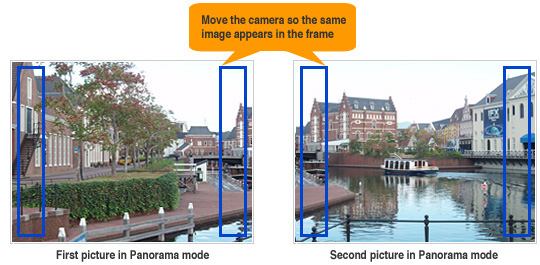 |
 |
Join the pictures to a single panoramic picture using OLYMPUS Master
Other examples of panoramic pictures
 |
 |
Useful things to remember
- You can use the panorama function only when using xD-Picture Cards. Join the pictures using a computer after having taken the pictures. Install the OLYMPUS Master picture management software from the provided CD-ROM in advance.
- The software will automatically recognize the overlapping portions of the pictures, but you will get better results if you use a tripod when moving the camera to take consecutive pictures.
Report Kenya 2010 – 3rd part
Jiří Pergl, Enterpreneur, Czech Republic
Report Kenya 2010 – 2nd part
19.1 Regions Laikipia and Nanyuki
We set this day aside to visit city magistrates in various areas of Laikipie where are we active. We informed all the mayors of our organization and what we do for the children in their province. We asked for a donation of a piece of land in the southern part Laipikie where they have rain at least once in a while. Why again and why another piece of land? I certainly can’t support a second orphanage. We need this land to grow food – vegetables, grains and beans to support our future children’s home so the operating expenses will be lower. As usual, all the mayors are excited and they will raise the issue at the city council, there should be no problem. By now you know a bit about Kenya from my reports. Unless we hold some official paper we should not get too excited. My gut feeling is that our chances are around 80%.
After some bureaucratic work and after an introduction of OMDC to the mayors (by the way, everybody who wants something from a mayor hast to go through three steps before he stands in front of him – we went almost immediately, without any complicated procedures) we go to visit some other locations where children are really suffering. I will again introduce these five kids to you with my new offering of our long distance adoption program.
Let me give you a small example of what we encounter here. We leave the main road and continue about 10 km inland. No road, we make our way through bushes, mud, dust, potholes that are half a meter deep and countless other obstacles. I nurse our Toyota Prado at 10 km an hour and than we arrive at… something. I have no clue – some wooden boards glued together with mud, grass, and plastic bags instead of a proper roof. Cyrus, who has seen quite a lot, goes inside to record it on video but is immediately back and he is throwing up. Outside we meet the HIV positive mother with a toddler, there is no father. The little girl we want to adopt is at school. We gave the mother a bag with food and went to look for the school. I have never seen any Masai as startled as those we met on our way. Speaking of which – we cover about 2 km in one hour of driving. We finally made it to the local preschool. Fifteen bewildered Masai girls aged between 3 and 4, together with their teacher, stepped out of a derelict shack and must have thought a UFO had landed. They had never seen a car, let alone a white man! So I was giving out sweets to confused children and putting them into their little mouths because their hands were so dirty. I took photos of a little girl named Elishiba Wambui Kairu and I will include her in our adoption program. After finding the main road again we continue back to Nanyuki.
There is a meeting ahead this evening. I invited all registered members of my organization ONE MORE DAY FOR CHILDREN so we could discuss what lay ahead and what we have already accomplished this week. Among our members there is a lawyer from Nanyuki, a female lawyer from Nairobi, a Nanyuki council member, three social workers, two assistants (Patrick and Cyrus) and the founders–Hellen and I. The doctor promised that he will collect blood samples from all our children so they can be tested and he will also give them an exam to find what other medicine they need. The lawyers discussed how to register OMDC in the north so we could build our children’s house and become active in all of Laikipia province. Patrick and Cyrus promised to make their nine-passenger vehicle they call Matatu available to use for the transport of Hellen and the kids. The social workers were discussing individual cases and then came my turn. Me and my English. Ouchh! I am old enough to remember when we had to learn Russian at school, some of you can perhaps relate, so my English is not textbook, to say the least. For the last ten years I have travelled the World and that is supposed to be the best way to learn. Even though I overuse infinitives and ignore tenses, so far I have always gotten by. So when it was my time, I, the President of our foundation started to speak. I have no idea where it came from, but I managed to give a fluent speech and ended with the pledge: “I promise that if Hellen and you succeed in getting the necessary paperwork, I will return in August and set the first stone in person. If I do not get money from sponsors, I will build our children’s house from my own funds.” Everybody applauded wholeheartedly and there were tears in my eyes.
20.1 Road from Nanyuki to Meru – rescue of 10 Masai girls
Together with Hellen and the social worker Josephine, who happens to be Masai, we announce to the Nanyuki governing body that the foundation ONE MORE DAY FOR CHILDREN will take care of the Masai girls and help them. That cheers up our journalist and he starts writing an article for a newspaper. We go to pick them up from the two orphanages. One other car comes with us because, as we found out, there are 11 of them plus 5 of us and that really will not fit into our Toyota. We come to pick up the first group and, again, I can’t believe my eyes. There are three little children, girls, the smallest is no more than three years old. Were they really forced to marry and have sexual contact? I am so mad I can’t even think straight and just want to punch somebody in the face. Easy, easy. This is not helping and it would only make the girls afraid seeing me this upset.
We seated the girls in our car and head north in the direction of Somalia towards the city of Meru. The reason? Josephine set up accommodations and arranged for a Catholic school for the 11 girls at the premises of the local children’s home. Josephine used to stay in this home and knows the director, a Catholic Father who was her teacher. He accepted the Masai girls, even though it was not for free. This home is sponsored by Americans and Italians.
The road from Nanyuki to Mehru is not bad. The pavement is full of potholes and obstacles that slow you down but much better than that terrible path to Doldol. The problem is that the road is full of drugged drivers that are tripping on stuff called MIRA. It is a flower grown in Kenya and exported worldwide for medical use. Locals chew it to bring them ecstasy. At least three times I barely avoided cars coming from the opposite direction swerving left to right. Often, I have to brake sharply or get out of their way completely so the girls in the back do not come to harm. Turning around to chase the car and kick the driver in the teeth makes no sense. They would not even know what was going on. One of the cars, a pickup truck fully loaded with construction material suddenly appeared in the opposite direction, coming from a fast turn at about 100 km/h, going sideways he straightens his vehicle, missed my rear view mirror by ten centimeters at 80 km/h and than stepped hard on the gas again. Madness.
Going about 40 kilometers an hour we aim for Mehru and I anxiously watch every car in our vicinity. Father, as everybody calls him around here, is waiting for us at the town’s end. He is from Tanzania and he is the director of a truly large complex for children. When we get there, we find that the accommodation and the schools are separated in to girls and boys areas. The complex can handle 750 children and is full. They are fully self-sufficient because they own the land where they grow grains and fruit, and they raise animal stock that provides them with life’s necessities. The children are from all around Africa but the largest numbers are from Somalia and Kenya. After a long inspection of the place and after seeing some of the domestic animals, which takes about 3 hours (locals just love to show you absolutely everything they have done), we go to visit the girls section.
I can’t help but think how strange this must be for our little Masai girls. After all that hardship, without parents, whose murders some of them witnessed, they will live here, among 450 girls they do not know, years–until they reach the age of eighteen. They have no possessions and all of a sudden they are thrown in the midst of turmoil created by the large number of girls of their own age. How will the other girls accept them? They would be separated, of course, they are of different ages. Oh well, I think they will go through many sad moments, but it is still better than staying on the street without food and water.
Anyway, they do not have to stay until 18. It could be they end up on the street again anyway, unless you help me with their adoption. I payed the first month for all 11 girls to stay in this complex. All 11 girls can be adopted into our program.
The specific information can be found at my web presentation www.omdc.cz in the section about the adoption of 11 Masai girls. When the time comes I would like to bring them to our shelter in Doldol. That’s where they come from and where anybody can visit them. For now it has to be the way it is. Best of luck my little girls…
After saying our goodbyes we leave the complex accompanied by 450 girls singing Christian song about school, work and God. Father says that if you keep to those fundamentals, your life on this Earth will be good. I shake his hand, and with the words God bless you, we head for Nanyuki. I spend the afternoon there with lawyers and organizing official sponsorship for adoptive parents from the Czech Republic. This is where my work ends. Work?
It is a lot more than hard work to me, it is a great pleasure.
I would like to conclude by stating that I managed to move our foundation one step further, perhaps two steps. We are known to all government members of the province Laikipia – Nanyuki. All of Kenya knows from newspaper reports of our help to the eleven Masai girls. Together with Hellen we got important people involved – lawyers, doctors and social workers. We established a functioning, furnished office in Nanyuki. We have moved significantly towards building the new children’s home in Doldol – complete documentation and drawings from the local architect are done and Hellen is working on getting a building permit as well as other paperwork necessary to begin construction. I helped 23 children improve their lives so they do not have to worry about the next day. I delivered food to 15 children that are waiting for the adoption and I gathered information including photos that will help in the process of distant adoption. Some of the children are hungry, some are HIV positive and some of them are orphans. I helped 3 children get a roof over their heads for the following six months and provided food for the next one to one and a half months. I paid the rent for the 12 kids you know from my previous visit; those children are also parentless. We saved 11 Masai girls from life on the street and I truly hope that people will help me with their adoption so they can stay off those streets. What to say in the end? Many thanks to all of you for the help you grant to our foundation. Thank you for reading my report all the way through to the end.
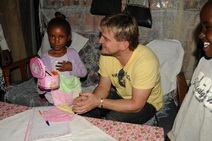 |
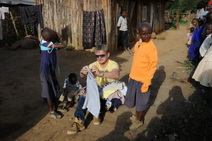 |
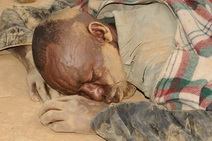 |
 |
 |
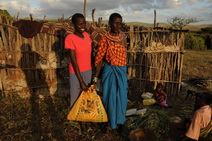 |
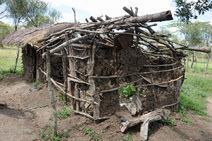 |
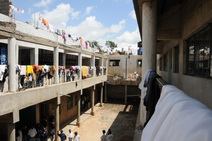 |
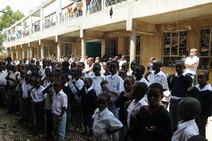 |

